1 Design 2022
First published for ‘Assemblage 2022’, The Sydney School of Architecture, Design and Planning Graduate Exhibition 2022.
School of Architecture, Design and Planning University of Sydney Wilkinson Building 148 City Road University of Sydney NSW 2006 Australia
2
Traditional Owners of the land on which the University of Sydney is built: the Gadigal people of the Eora Nation. We pay respect to the knowledge embedded forever within the Aboriginal Custodianship of Country.
3
We acknowledge and pay respect to the
4
5 Contents Dean’s Welcome Editorial Foreword Conversations In Conversation with Design Brain, Mind and Mallett Street Project Chris L. Smith, Donald McNeill, Leigh-Anne Hepburn, Jason Dibbs Futuring the Sonic Dimensions of Urban Protest Clare Cooper, Dallas Rogers Master of Interaction Design and Electronic Arts Master of Design Bachelor of Design Computing Public Programming Sponsors 6 8 10 12 16 20 24 42 54 72 86
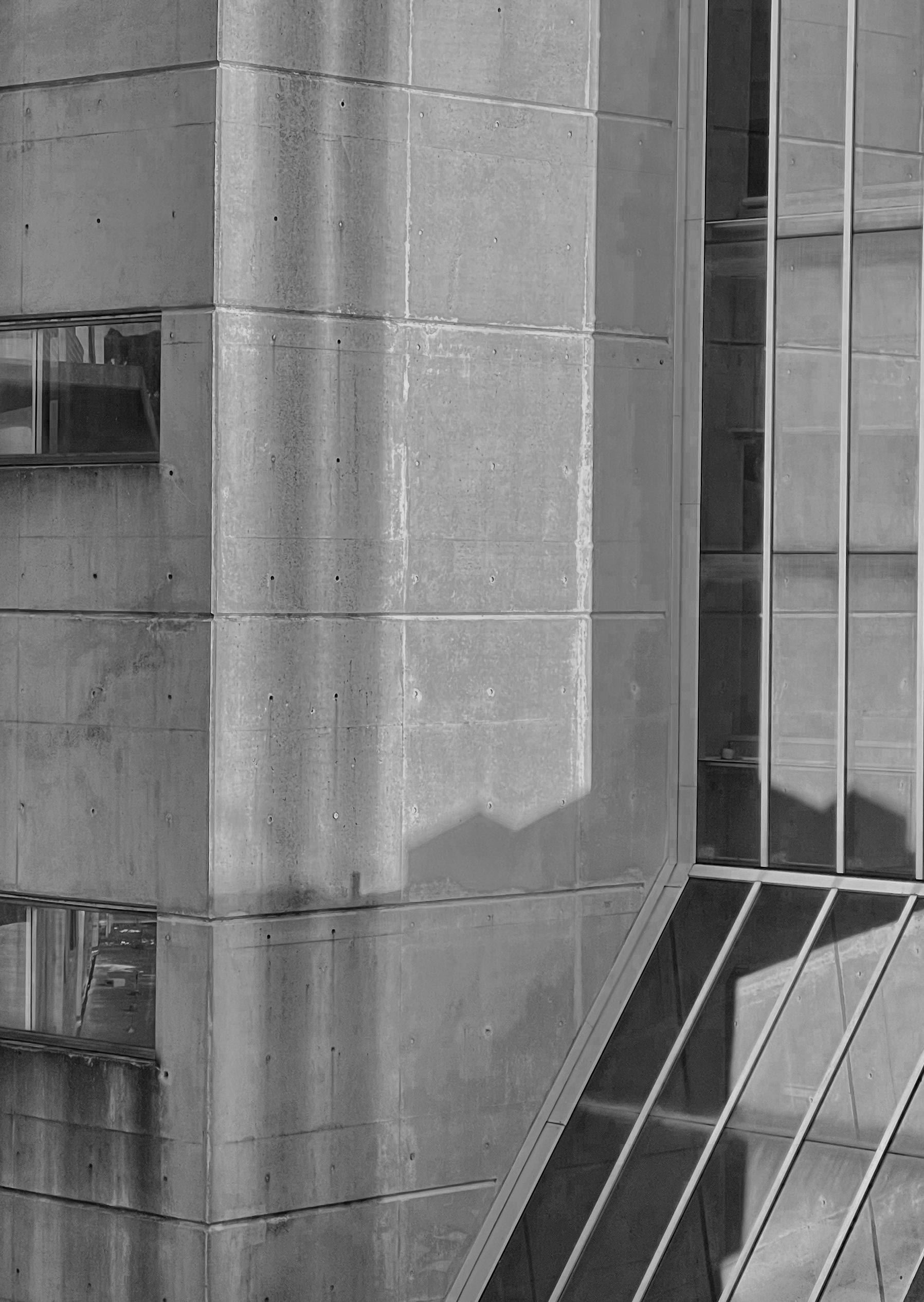
Dean’s Welcome
Professor Robyn Dowling Dean and Head of School
The Sydney School of Architecture, Design and Planning sits proudly on Gadigal land, where Aboriginal people have taught, learnt and nurtured since time immemorial. At the beginning of the 2022 academic year the School was delighted to welcome new students from across our disciplines through activities on the site now known as Gadigal Green, once a popular Gadigal fishing spot in Blackwattle Creek. We also welcomed students joining us from dozens of countries across the world, studying remotely from across Australia and the world - Kamilaroi, Dharug, Melbourne, Beijing, Mexico to name a few. The collective learnings across these geographies come together – are assembled – in the 2022 Graduate Show.
Architects, designers and planners came together in myriad ways in 2022. The visit of our Rothwell Co-Chairs and Pritzker Prize winners, Anne Lacaton and Jean-Philippe Vassal, reminded students, staff and our professions of the positive design and social outcomes that come from putting people first and reconsidering the need for demolition. The Tin Sheds Gallery hosted a full program of events and exhibitions, culminating with salient reflections on gender and technology in SHErobots. Through yarning circles and a project on indigenising the curriculum, staff and students continued to reflect on Indigenous perspectives and places in our curricula and practices.
The School will continue its activities to lead thought on designed and built environments into 2023. In conjunction with the University’s Sydney 2032 Strategy, we intend to expand our post-professional offerings, welcome students to our new Bachelor of Design (Interaction Design), and look forward to the return of our Rothwell Co-Chairs to both studio and a Tin Sheds exhibition. There are many other activities too numerous to mention: the Sydney School of Architecture, Design and Planning will remain a vibrant assembler of communities, materials, and practices for many years to come.
I wish our graduating students well and look forwarding to welcoming you back to the University throughout your careers.
7
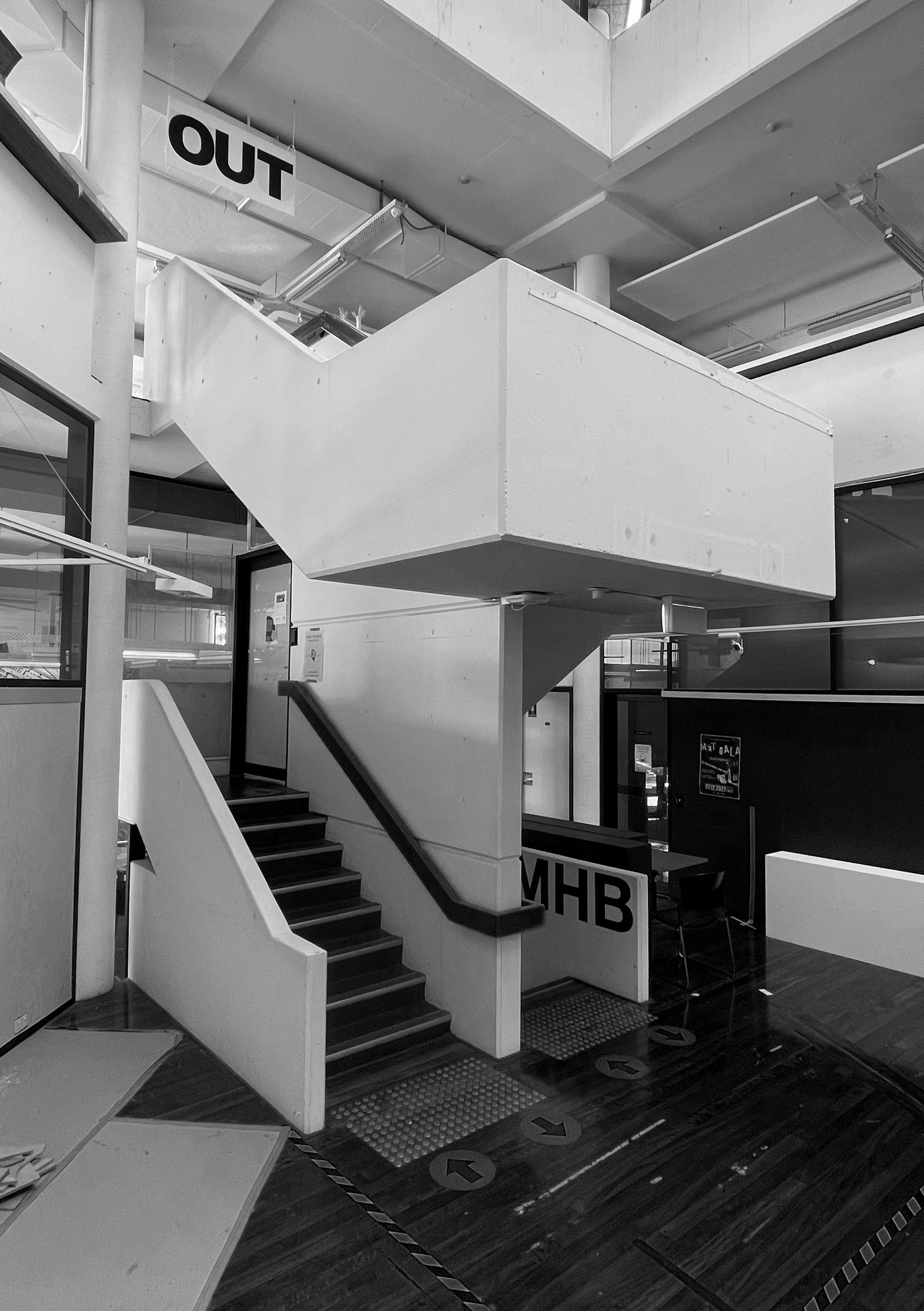 Kate Goodwin Professor of Practice, Architecture
Kate Goodwin Professor of Practice, Architecture
The term ‘Assemblage Art’ was coined in the 1950’s by French artist Jean Dubuffet, but it has a lineage that runs back into the early moments of the 20th century with continued currency today. Assemblage Art brings together disparate everyday objects, scavenged and purchased, into physical compositions and experiences that unsettles distinctions between painting, sculpture and performance. It came to challenge the very definitions of art itself. The methods and logic of assemblage came to be associated with the Cubist constructions of Pablo Picasso and George Braque, the Ready-mades of the Surrealists, Kurt Schwitter’s ‘Merz’, the 1950s Abstract Expressionists Jasper Johns and Robert Rauschenberg, Allan Kaprow’s “happenings” of the 1960s and 70s, Jannis Kounellis’ gallery interventions and recent practises of installation art. Likewise, it has infiltrated architecture, design, and urbanism.
The title Assemblage for the 2022 Graduate Exhibition of the Sydney School of Architecture, Design and Planning, expresses the creation of an experience that brings together a colourful and complex mix of disciplines, ideas, and devotees. Overtaking the Wilkinson building for 2 weeks, the exhibition has been devised over the past semester by a dedicated team of students from five different degrees. Along with the supporting marketing material, website and catalogues it reflects the creative energy emanating from the School. The logo, formed of three shapes –representative of the disciplines and derived from the staircase at the heart of the building – come together to create a form more compelling than any one on its own. In a similar fashion, alongside the work of the graduating students, this catalogue assembles conversations, across disciplines, experience and generations. Through conversations – in the act of listening and speaking – ideas are debated, a common ground is found, and ideas evolve.
Ultimately Assemblage is a celebration of these rich relationships and the captivating manner by which our graduating cohort of 2022 explore and express such relations in a diversity of ideas, forms, materials, places and people. Such assemblages are never entirely complete, but themselves connect into other artforms, architectures, designs and contexts… and extend into the brightest of futures.
9
Editorial

Foreword
Somwrita Sarkar Head of Design (Acting)
Networks, relations, complexity. Our world is now more connected than ever before. A new movie would probably be named No Degrees of Separation. No longer can we cleanly partition the layers of human interactions against the layers of infrastructural or technological interactions. No longer can we say that design, art, and culture are essentially human endeavours: the physical and the material layers of our world are actors and the artificial systems we have created have assumed character and agency of their own. They shape our lives, as we shape theirs.
All at once, the discipline of Design faces an immense challenge, and is gifted with an immense opportunity. We face crises like never before. Pandemics and forest fires and floods tear across our lands and our lives. Our world, if it needs to survive and survive well would need us to slow down, stop, reflect, rethink, and act in ways wholly new. As designers, we think of this as an opportunity. We think of this as an exciting precipice, on which our students stand prepared, ready to take the leap into the unknown.
The exciting and diverse body of works our students showcase this year stands as evidence of the breadth and depth of resilience with which they have engaged with learning in design, of design, and for design: mastering current and emerging technologies at the frontier of change, but with a deep human-centered focus.
In this web of complexity, within which we are embedded, and that we have the power to change through our actions, is it time for Design to move from being human-centered to planetcentered ?
11
In Conversation with Design
The discipline of design has grown significantly in recent years, bringing together a diverse and engaging group of scholars, practitioner, and designers. Whether the focus is on design for technology, or design for social change, one theme resonates across everyone – a drive to equip our graduates with the skills and experiences needed to make a difference in the world. Here are a few parting words from your teaching team:
Where do you think our graduates will have the most impact?
SENURI WIJENAYAKE
You will have the most impact when you champion a cause that matters to you. Follow your passion!
HAMISH HENDERSON
Our graduates have been given a set of tools to better understand people and the problems they face. This, combined with an understanding of technology and the design process gives them the ability and opportunity to affect significant change in the world. Our graduates have the potential to be extraordinary. I can’t wait to see them get started.
SAM GILLESPIE
You’ve learnt how to design solutions to problems. Now you get to choose the problems you solve---follow your vision and passion!
KAZJON GRACE
The number of challenges that can only be solved by someone interdisciplinary – someone who understands a little about people, a little about tech, and a little about business – is only going to increase. In a decade, anyone who can’t grok at least two of those will be at a disadvantage. Our graduates can do all three.
LIAN LOKE
Your design skills give you the tools to bring others to the table and on the journey, across industries, disciplines and communities.
ROBERT DONGAS
Our graduates will have the most impact through the thoughtful application of design and technology to help solve real problems in the world, regardless of industry/discipline!
ROHAN LULHAM
You will flourish where you find meaning in the application of your knowledge and skills.
BRITTANY KLAASSENS
Designers bring a whole lot of empathy, drive and passion to whatever challenge, career, opportunity, or daily tasks they face. This is your opportunity to make a difference to the world, far beyond the designs you make on the page.
12
LEIGH-ANNE HEPBURN
You can create real change beyond the discipline of design - you’re equipped with creative skills in communication, collaboration, and complex thinking and these are in demand in every industry and field.
CLARE COOPER
I think these design graduates will bring a readiness to stay creative in difficult circumstances (persisting with study during a pandemic!) While extremely difficult at the time, this has built up their resilience, and honed ability to engage in a kind of design futuring that is sensitive to communities who are facing myriad social challenges.
CALLUM PARKER
Design grads have the power to shape the future of any discipline they find themselves working inanywhere, and everywhere.
YARON MERON
Hopefully new design graduates will put their enquiring minds and problem-solving talents to good use, by addressing big challenges in small ways.
WENYE HE
Our graduates are equipped with multidisciplinary knowledge, fantastic imagination, and most importantly, PASSION. They will impact every aspect of our lives and improve our experience in the combination of digital and physical worlds.
DENSIL CABRERA
Graduates have rare and valuable expertise in areas that really need good design.
LUKE HESPANHOL
In changing the world from the ground-up, in any area, at the scale of each interaction, with ability to swiftly adapt to new contexts.
Whats your top piece of advise to our graduating designers?
LIAN LOKE
Stay curious, open and empathetic. Don’t be afraid to jump in the deep end ... you have a strong foundation to build upon.
KAZJON GRACE
Don’t ever convince yourself that the reason why your crazy idea isn’t a thing is because someone else already had it, tried it, and binned it. The space of possible ideas is huge: you might just be first!
CLARE COOPER
Be open to bringing in all of the things that are unique to your story into your collaborations. You don’t need to repeat or to emulate. If you find people and projects that resonate with your values, chances are you’ll then help to define the direction they take.
13 CONVERSATIONS
SENURI WIJENAYAKE
ROBERT DONGAS
Remember that the interactions and experiences you design will shape our societies, culture and ecosystems, so always consider the bigger picture.
Be confident in what you have learnt and take on learning opportunities to build up on that. Advocate for yourself but be open to different perspectives.
SAM GILLESPIE
Follow your passions and keep learning new things. Each step you take changes you, so reach out for the world you aspire to see and leap in its direction!
CALLUM PARKER
Stick to your guns. Not everyone will understand Design and “the process”, you will need to carefully help them understand. I will also say, don’t be afraid to keep learning. The industry moves fast, and you should always be looking to expand your skillset and try cutting edge techniques and technologies. You have been given a framework from this degree; it is up to you to keep expanding it.
DENSIL CABRERA
Don’t forget to listen!
LEIGH-ANNE HEPBURN
Your design skills are transferrable across disciplines, but learning how to communicate that effectively is a skill - keep perfecting your pitch!
YARON MERON
Don’t be afraid to keep asking questions, even ‘stupid’ ones. It’s what makes you a good de-signer. If you’re looking for answers, chances are other people are also.
ROHAN LULHAM
Be ambitious, humble and curious to find places where you can flourish personally and professionally
BRITTANY KLAASSENS
Try everything once! You never know where your interests are. You may be surprised where certain opportunities take you!
HAMISH HENDERSON
If you want to be a successful designer, you need to be empathetic. You need to truly understand people and the problems they face if you want to design for a better world. Be quick to listen and slow to speak. Being paid to design is a privilege, don’t ever take it for granted.
WENYE HE
There is no end to education. Learning is a lifelong process
14
LUKE HESPANHOL
Embed compassion in everything you design and do. You may not always be able to relate, agree with, understand, or explain the pain of other humans (or non-humans). But acknowledge it and build bridges from there.
15 CONVERSATIONS
16
Brain, Mind and Mallett Street project
In 2020, the Brain and Mind Centre (BMC) approached the Sydney School of Architecture, Design and Planning (ADP) to collaborate on research to understand the role of spatial design in the delivery of clinical services and research processes in mental health, neurology and neuroscience. The project commenced with a co-design workshop bringing together ADP researchers and twenty clinicians, researchers, scientists, and administrators from the BMC. This led to a series of semi-structured interviews, extensive site visits and documentation, architecture studios in mental health design, and a book chapter, in the forthcoming Routledge title, Design for Mental Health and Wellbeing: Co-Design, Interventions, Education and Policy.
Those involved in the Brain, Mind and Mallett Street project, Chris L. Smith, Donald McNeill, Leigh-Anne Hepburn and research associate Jason Dibbs have come together to share their insights into the project.
JASON DIBBS
The collaboration has been an evolving research journey. The initial phase of the project focused on understanding the perceptions of Brain and Mind Centre stakeholders concerning the physical spaces in which they conduct their clinics and research. But very quickly, questions we were asking about the co-location of services and programmatic adjacencies started to yield other, arguably more exciting insights.
LEIGH-ANNE HEPBURN
That’s true. For example, we gleaned a more intricate understanding of the conditions underpinning crossdisciplinary and inter-disciplinary collaboration. Before the project, I don’t think we quite grasped the methodological distinctions between architecture, design, and planning, let alone the complex and nuanced distinctions between the Brain and Mind Centre’s various stakeholders.
CHRIS L. SMITH
On the point of collaboration, I thought the multiscalar explorations were fascinating. We’d always worked on the assumption that urbanists operate at the city scale, architects at the building scale, and designers at the scale of objects … but these assumptions were substantially challenged by the collaboration.
DONALD MCNEILL
For me, it was also interesting to think about how mental health and neuroscience faced the city in an institutional setting. I was interested to see how the interior design of the space nested within the architecture of the building, and how that all articulated with the city.
LAH
I guess what was common across our experiences, though, was a consideration of people and place, and the synergies and challenges that play out in
17 CONVERSATIONS
our interactions as we navigate daily life. Whether we were exploring the perspectives of clinicians, researchers, or project managers in interviews and focus groups, or walking through buildings to understand the patient experience—it was clear that the interactions that happen within a space shape it as much as the physical space itself, particularly within an organisation such as the Brain and Mind Centre with its many diverse population groups.
CLS
The way such interactions scale to the logic of cities was particularly fascinating…
DM
There’s actually been a lot of interesting work in the UK by people like Nikolas Rose at King’s College London on the idea of the “neuropolis,” the idea that the city can be seen as a lot of interacting brains, that city life induces stress, and so on. This includes the idea of how mental health is governed at the city level, because so many different actors come into play, ranging from police, front-line public health workers, workplace culture, and the clinical approach to diagnosis and treatment.
JD
The idea of the “neuropolis” is such a provocative one. As our research progressed we identified multidisciplinary and interdisciplinary relationships that extended well beyond the Brain and Mind Centre’s physical location on Mallett Street. These included the Sydney Local Health District, Royal Prince Alfred Hospital, and the university more broadly. Perhaps it makes sense to think of the University as a neuropolis.
CLS
Indeed. As we thought more about the Brain and Mind Centre’s role in the University, we identified opportunities to think about our collaboration in terms of not only research but also teaching. Undergraduate architecture and design students formed teams to work on an outpost for headspace Camperdown in the Wentworth building as part of a Winter Intensive. In Semester Two, the Master of Architecture Thesis Studio students worked on a “Head Place” project for headspace and the Brain and Mind Centre exploring the possibilities for their Mallett Street site.
JD
Both studios generated exceptional results and we were amazed by how intensely the students wanted to work on mental health-focused projects. It’s been a complex couple of years for the planet and its population and the core question of mental wellbeing has presented itself as a concern for both individuals and design and architectural professionals.
18
LAH
From both the teaching and the research what has been clear is that people are adept at finding ways to occupy space, circumnavigating obstacles, and looking for opportunities to improve their daily lived experiences. These adaptations can be formal or informal, for example accessible signage for wayfinding or establishing ad-hoc meeting places in kitchens. Such adaptations work to inform the social and physical spaces of places we inhabit. In the case of the Brain and Mind Centre, these adaptations also work in a transdisciplinary way—translating across the diverse disciplinary perspectives to inform how, and how well people collaborated.
19 CONVERSATIONS
Futuring the Sonic Dimensions of Urban Protest
Clare Cooper and Dallas Rogers talk about sound and activism in the city, and the importance of amplification and listening in urban politics. Their shared passion for this topic has led to a cross-disciplinary research project involving workshops and an interactive exhibition and pirate radio performance in the Tin Sheds Gallery that amplifies Black and multicultural voices and stories.
DALLAS ROGERS
So, we’ve spent a bit of time together on the picketline at Sydney Uni, with the rolling set of strike actions throughout the year. And we’ve had a bunch of conversations about activism and urban protest at these events, and at one point we started talking about sound, and music, and the sonic dimension of urban protest. I think I said, as a through-away line, I’ve always wanted to do a pirate radio show about this type of stuff, and we started talking about all the things we could put on a pirate radio station.
I’d just finished audio recording the Black Lives Matters protests in Sydney, and I had a rich sonic picture of these protests in my head. There’s the sound of the protest chants, of course, but there’s also the sound of the police helicopter overhead. It’s really powerful audio, and the absence of any visual cues focuses your attention in a really interesting way.
I’ve since learnt, from Alison Young actually, that police helicopters are used as a ‘sonic weapon’ in protest management. The police fly their helicopters low over the crowd with the specific aim of intimidating them with the sound of the helicopter; a sonic weapon that was being used on that day to, yet again, manage black bodies in urban space. So, there’s something really important about sound, activism and cities at play here.
CLARE COOPER
I can imagine the Naarm-based sound artist Bridget Chappell would have some fun composing to cancel that out! Do you know her No Comment project, where she phase cancels the cops “in material, political and psychic terms”?
DR No I don’t, but it sounds fantastic, I’ll check it out. What have you been up to in terms of sound and the city?
CC I’ve been involved in community organising and artist-run spaces and arts festivals for just over 20 years now — with 6 of those years in Berlin learning from established squats and networks of creative resistance movements engaging with sound and performance.
20
It strikes me that some of the most effective forms of activism are not recognised as activism at all due to the entertaining or joyful nature of how it is framed or shared. I’m thinking about experimental music events, wild all-night community radio shows, not-quite-legal-parties, and platforms amplifying the voices unheard in mainstream media all play their part in fighting against a monocultural status quo. I know a lot of people are put off by the tired tropes of activism (shouting, petitioning, marching)... but as Naomi Klein said “that’s a terrible reason to let the world burn!”(Channel Four, 2019, 27:10)
I’m keen to work with you bringing together activists and organisers involved in community radio and critical listening stuff, and to try to contextualise it in urbanism and design research so that other people in these fields might consider the role of sound in the contested histories and futures of a city.
DR I can draw on a podcast series I produced called Podcasting the Urban. Back in 2018 I organised four public panel discussions to critically interrogate the idea of academics ‘podcasting the urban’, and I recorded two of these panels, and used them to make a pod series. I ran the two panel discussions as listening events in front of a live studio audience, so it had a performative aspect to it, I guess. At each event I played podcast excerpts from some of my favourite podcasts, and we talked about them, unpacked them, and pulled them apart. Black and Aboriginal voices were centred in these panels, and we talked about things like, oral storytelling and Indigenous methodologies as radio practice, the history of Aboriginal community radio in Sydney, podcasting as an engaged research methodology, podcasting as a research dissemination tool, the politics of representation and voice, and heaps more.
One of the more powerful moments from these panel discussions was when Lorna Monro, a proud, young Wiradjuri/Gamilaroi woman, Wiradjuri man Joel Sherwood-Spring, and Nicola Joseph talked about the history of Aboriginal radio and activism in Sydney. And community radio stations like Koori Radio, Radio SkidRow and 2SER radio are very important to the history of Black politics in Sydney, which includes playing a key role in some of the first invasion days protests. And Radio SkidRow has a connection back to the University of Sydney too, which is nice.
So, there’s something here for us to explore, something about sound, protest and the city to better understand.
CC
It is absolutely fitting that we first started talking about collaborating on a project focused on creative activism while we were at a protest!
21 CONVERSATIONS
In the research and planning (the “chats”) we’ve had to date, we’ve both interested in the role that sound, radio – community radio more specifically –plays in amplifying activism, and how that might shift over the next 10 years. We want to publicly ask questions like: “What are some of the major forces of change at play for radio and for listening cultures? How are activists engaging with these platforms? What are the most creative forms of resistance related to sound?
How will all of these things change as anti-protest laws become more draconian, anticipatory… how do you get the word out about activism without putting the organisers at greater risk of arrest?”
DR
The exact form of the public program and exhibition inviting other people into these questions is still to be determined. We want the exhibition to challenge people to think about sound and activism in the city more carefully. And the idea of ‘amplification’ points toward this aim in the work, and we’ll absolutely be setting out to amplify Black and multicultural voices through this work, that goes without saying. We’ve already started talking to Michael Mossman and Preston Peachey to curate the BlakOut element of any public program that we end up realising through this collaboration. The performative aspects of the exhibition have got to be a key aspect of the program.
But what, exactly, we’ll be doing is, I guess, still to be decided. And a big part of this decision-making will be shaped by the conversations we have with the various people we want to involve in this project.
CC
That’s where the design futuring workshops come in. We can highlight significant stories, and moments from official and informal archives to consider some detailed future scenarios… I’m looking forward to working with people to visualise and communicate what solidarity and activism could sound like, and also how radio draws people to get involved in grassroots movements.
These workshops will be interwoven with yarning circles and walking with local Aboriginal leaders. We’re learning that we need to take time, and to be better listeners, whether that be listening in a research setting, with kin, or with Country, or making music, designing spaces or systems. We are particularly responding to Gadigal Bidjigal Yuin Elder Aunty Rhonda’s calls for Country to be at the heart of our decision-making, where “the truth is told and we’re all able to sit at the table together––listening to and respecting each other” (Gregoire, 2020b, para. 81). Whether you’re conscious of it or not, sound and listening plays a key role in connecting us to one another and to where we are, and we want to draw attention to that and celebrate it…
22
For those who have worked in community organisations, community radio, we know the joys and torments of the mess and lack of resources. There’s a kind of energy that drives these spaces and projects that can’t be bottled or bought. It would be so great to find a way to communicate this to people who aren’t familiar with it, and for those that are – it will be an excellent chance to celebrate it and help to highlight ways to sustain it. Humour, joy, fun, messing around with noisy kids, all of these things can contribute to breaking down the heaviness that can hang over ongoing resistance movements and campaigns… let’s do our best to bring these things in.
DR
Yeah maybe we can have some kind of public program in the space that encourages improvisation and responsiveness to what is created in there. And stuff that is exciting for kids too! We could have a kind of ‘Static Exhibition’ occupying the walls of the space, and include grassroots community radio materials related to radio and sound activism. Depending on what the local community radio stations want to share/show – which moments of solidarity and amplification of past activism is important to them. And I am still keen to set up a Pirate Radio station here! We can record performance events as we go, and add them to the static exhibit as interactive material via headphones on the walls. So, the exhibit will grow over the life of the exhibition.
CC
I love that idea of an exhibition that’s a conversation that grows over the life of the show. A living, messy (and probably noisy) takeover of some kind of gallery space spilling into outdoor spaces and airwaves… let’s see what happens.
Clare Cooper is a design lecturer in ADP. She is a musician, design futurist, climate justice activist, and the cofounder of several community-run organisations including Frontyard Projects, Community Environmental Monitoring, the NOW now festival, as well as two large improvising orchestras: Splinter Orchestra (Sydney), and Splitter Orchester (Berlin).
Dallas Rogers is Head of Urbanism in the School of Architecture, Design and Planning at the University of Sydney and a practicing radio-maker. He produces radio features for ABC Radio National and is the founder of City Road Podcast, amongst other radio projects.
23 CONVERSATIONS
24
Master of Interaction Design and Electronic Arts
Introduction
Luke Hespanhol Master of Interaction Design and Electronic Arts Program Director
Interactive technologies are everywhere. From wearable devices to autonomous vehicles, augmented reality to smart cities, robotics to recommender systems, social media to playful urban installations, digital interfaces permeate most aspects of our lives, mediating how we relate to the world. In the process, they also remake us: their ubiquity has exposed the entanglements between humans, non-humans, and the surrounding built and natural environments, from the immediate vicinity of user interfaces to planetary issues. Things do not exist in isolation, rather in relation to others around them, forming assemblages and ecosystems, which in turn relate to others to constitute even larger ones. Technologies produce and are produced by those relationships, with important implications not only to user experience, effectiveness, and efficiency, but also to ethics, aesthetics, culture, social responsibility, and environmental health.
This entangled reality becomes even more apparent in the wake of the profound crises we currently faced, from pandemics to the climate emergency, as well as through the growing awareness about our past mistakes, such as the centuries-old inconsequential exploitation of wildlife, natural systems, and First Nations peoples worldwide. Addressing those challenges require skills to identify not only the disciplinary dots to be connected, but most importantly, the negative space between those dots, on which new connections and interactions can be forged, to mutual benefit.
Interaction Design addresses precisely this social connecting tissue, through which disparate entities may come together, collaborate and, in the process, mutually influence and transform one another. Electronic Arts mean to understand and reshape those entanglements through digital technologies, expressing them in a new light and innovating with a creative ethos.
The Master of Interaction Design and Electronic Arts adopts this relational approach at its core, equipping students with critical, analytical, and creative thinking, as well as hands-on technical skills and opportunities to put them in action. Not only to design transformative and positive new assemblages between humans, computers, and the broader world, but also to question and, if needed, expressively redesign inadequate presents into more desirable futures.
Welcome to the entanglement. What makes you, and what are you going to make next?
27
Designing with Data
Graduation Studio Somwrita Sarkar
We now live in a world where the boundaries between the physical and virtual have dissolved. The millions of personal devices we own, through the interface of the virtual, shape our physical experience of the world. These millions of computers generate data about every aspect of our lives: how we live, how we eat, and how we travel, to how humanity collectively deals with pandemics or economic crises. This data shapes, facilitates, and controls the quality of our lives.
This project challenges students to merge their skills and reflections as designers with their skills in programming using Web Technologies to explore the world of data and its meaningful, effective, ethical, transparent, and aesthetic visualisation. Students have produced a combined portfolio piece made of both static and interactive information visualisations starting from raw data. Students explore the challenges of picking topics close to their hearts as human beings and professionals, search for relevant data sources, think deeply using reflective design processes and methods, and work with emerging web technologies to design visualisations that tell a myriad of stories about our data-awash planet.
Tutors: Abhiruchi Chhikara Ben Doherty
28
Master of Interaction Design and Electronic Arts Student Index
C Yuxin Cai Wei Cao Jun Chen Jieru Chen Danyan Chen Qiao Cheng D Zheng Dong Keting Dong F Xiaoyu Feng G Heng Gao Ziqing Gu Jie Guan H Shuxin He Shuqi He Yaqin Huang Shenghao Huang
J Yi Ji Xingyue Jia Nan Jia Chen Jin Grethel Rienzi Malig Juanta K Sau Kei Kwok L Ruochen Li Jialin Li Xinwei Li Furong Li Hanyu Li Zixin Lin Danyang Lin Hao Liu Luohan Liu Yu Liu Boxin Liu Yiyang Liu Gaohang Luo M Siqi Ma Siying Ma Jiayi Min Anna Elaine Mylordis
N Yuwei Niu
P Yongan Pan Q Yaoyu Qian Bowen Qin S Jiaqi Sun W Qichunzi Wang Wenlin Wang Xueying Wang Sirui Wang Ying Wang Jiahuan Wang Yifeng Wei Haotong Wei Yijin Wu X Hong Xiong Qian Xue Y Yingzhen Yan Ziying Yang Zhiqian Yang Mingyu Yang Puying Ye Tong Ye Xinnuo Yu Haixiang Yu Wendy Yu Z Fanqian Zeng Hengshen Zhang Yongyi Zhang Honghao Zhang Yunchen Zhang Yuzhe Zhang Zinan Zhang Huiqing Zhao Yingying Zhong Jiayuan Zhou Xinlei Zhou Xuanduo Zhou
29 MASTER OF INTERACTION DESIGN AND ELECTRONIC ARTS
The huge spending but lower life expectancy in the United States Hong Xiong, Wenlin Wang, Luohan Liu


30
The Secrents of the Recent CPI in Australias Capital Cities Yu Liu, Mingyu Yang, Yuxin Cai


31 MASTER OF INTERACTION DESIGN AND ELECTRONIC ARTS
Meeting the diversified accomodation needs of tenants and improving utilisation rate of idle housing sources Chen Jin, Lin Zixin, Zhou Jiayuan, Zheng Dong
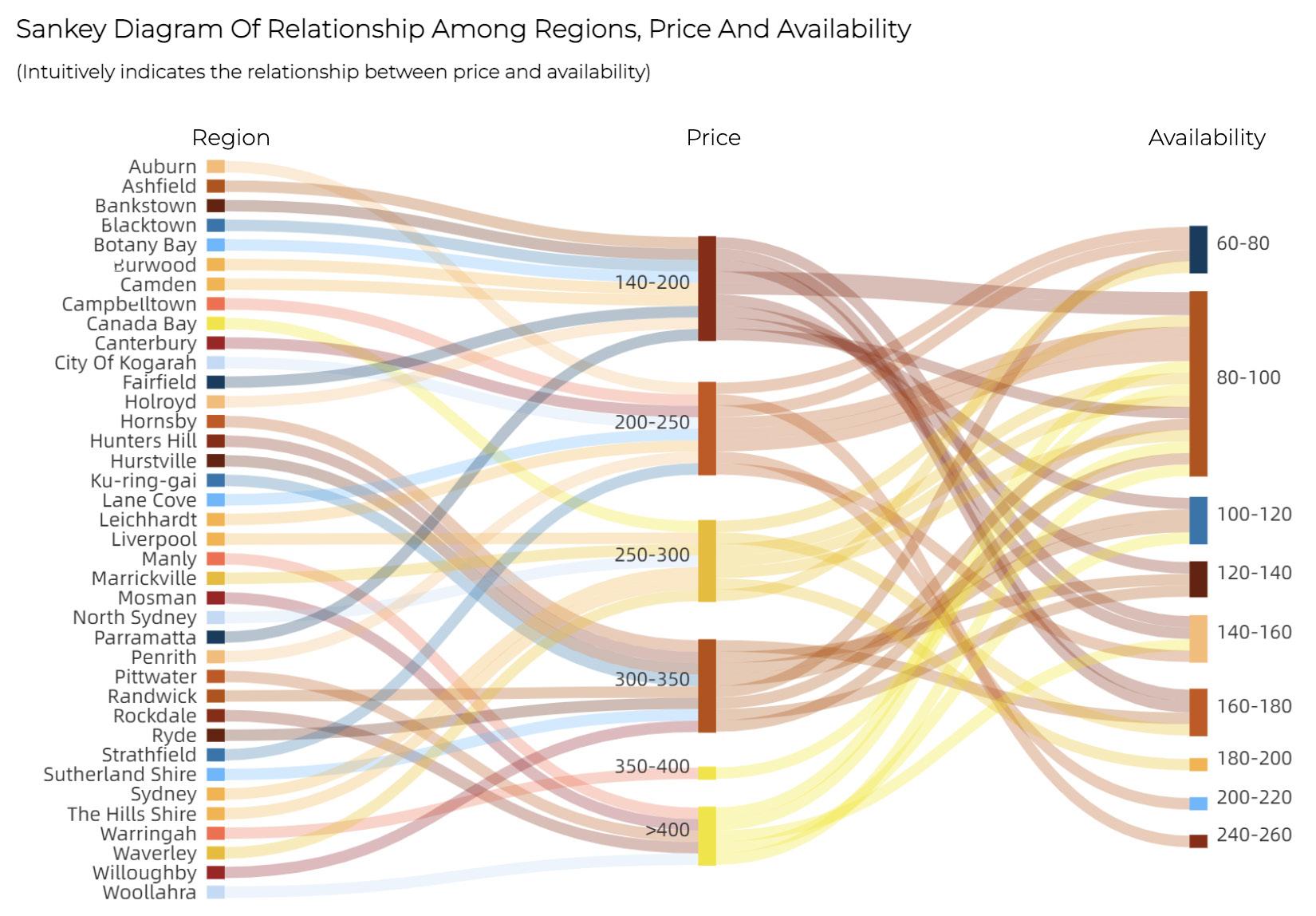
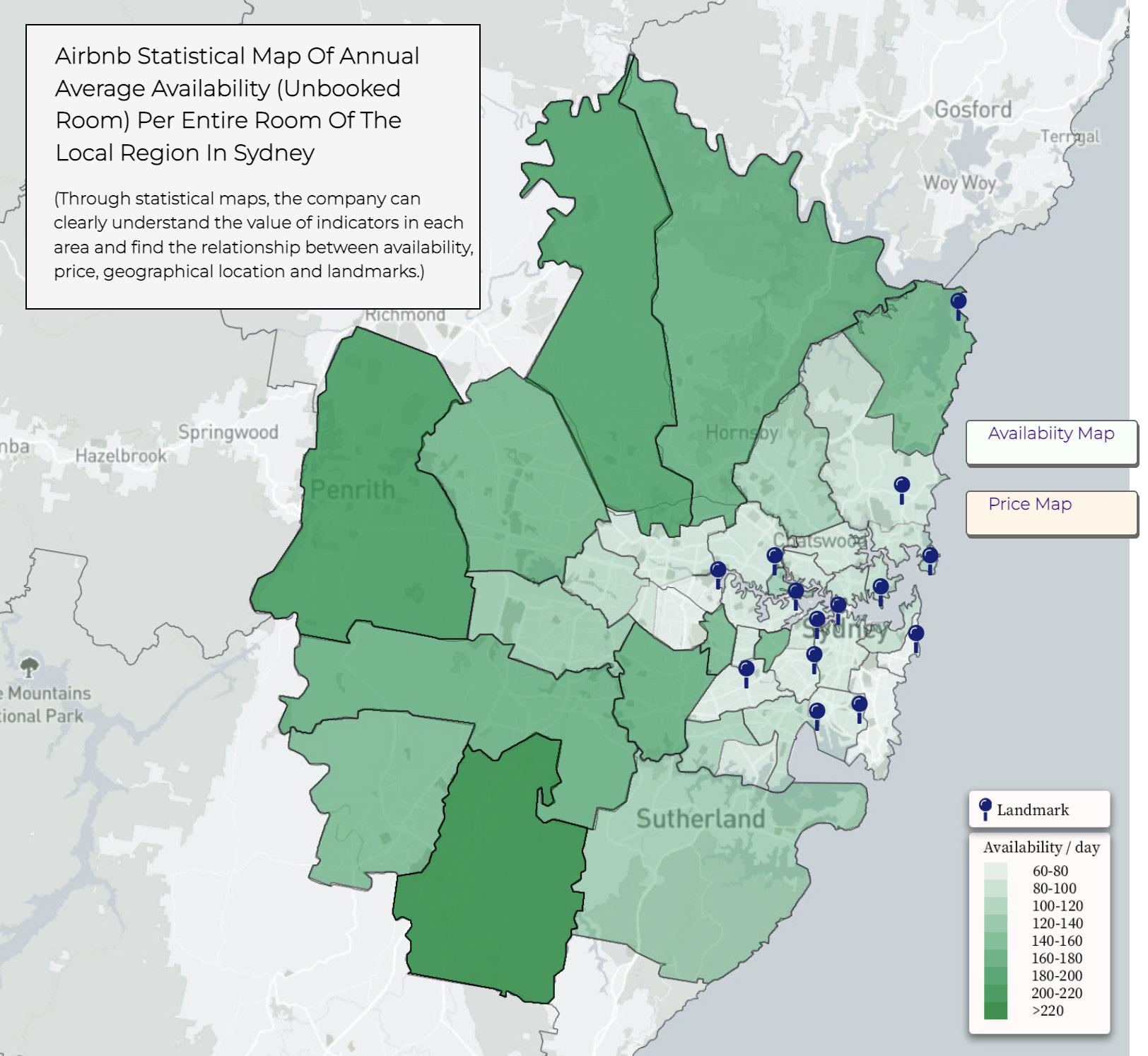
32
How to produce a song that can go viral on Spotify Jieru Chen, Danyan Chen, Christy Chen

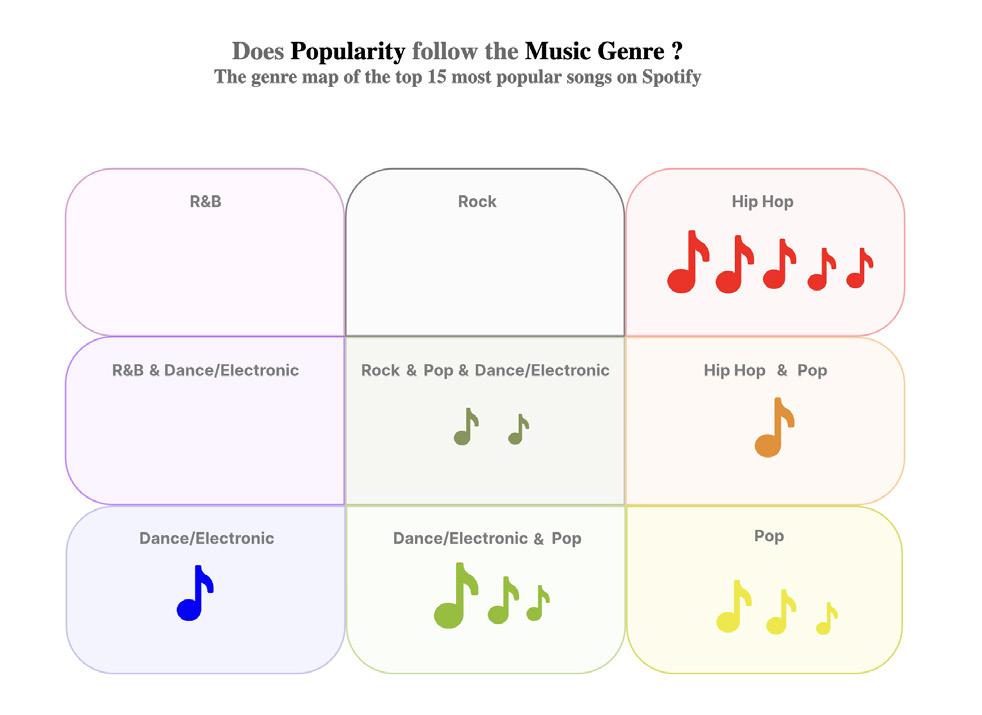

33 MASTER OF INTERACTION DESIGN AND ELECTRONIC ARTS
Are the different crime incidents in NSW during COVID related to time?

Ziqing Gu, Furong Li

34
Firearm Violence: A Deep Review on USA 2020 Violence-Related Deaths Shuqi He, Puying Ye, Haixiang Yu
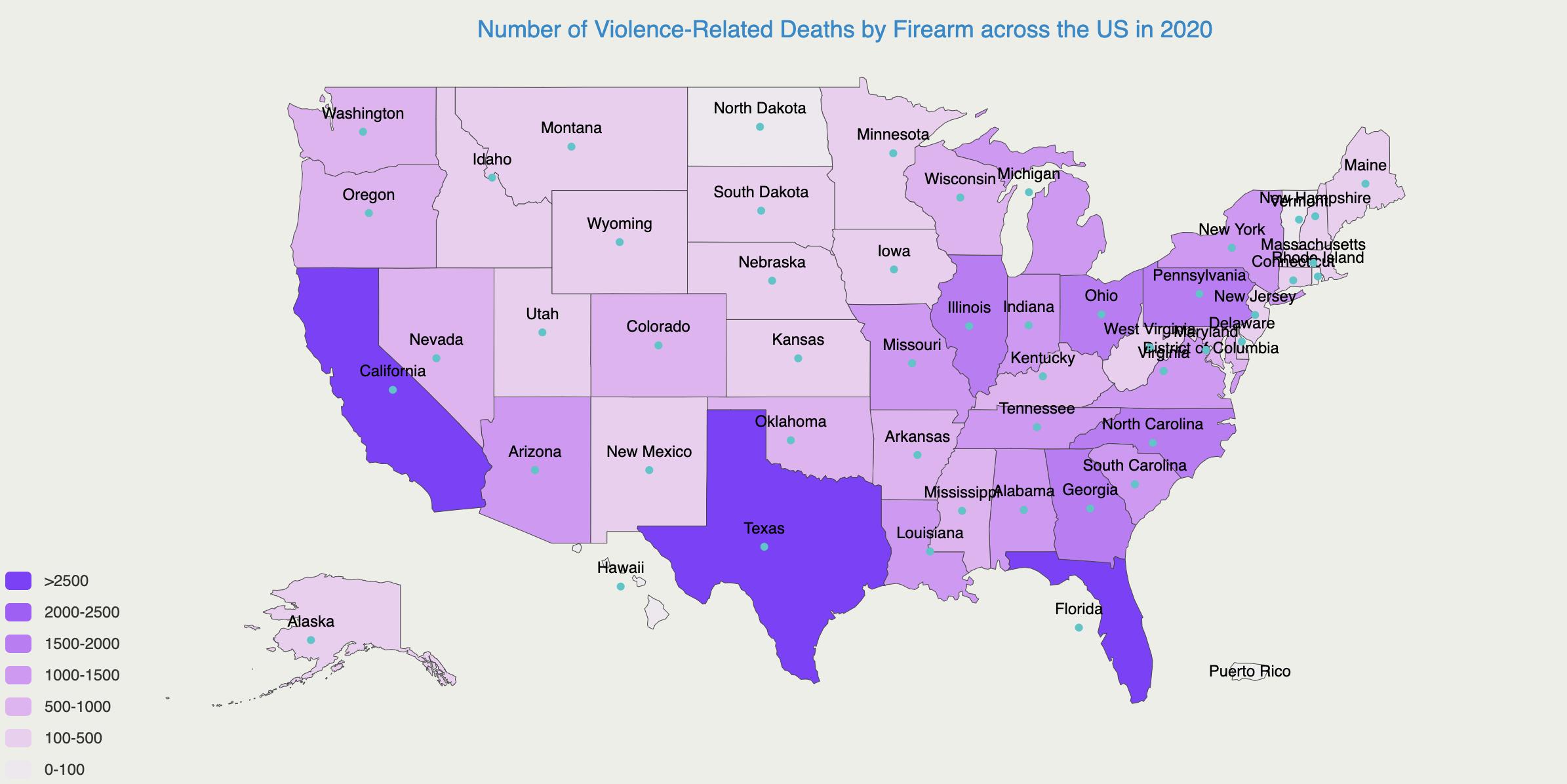

35 MASTER OF INTERACTION DESIGN AND ELECTRONIC ARTS
Relationship between new tobacco products usage among different age groups in the United States, 2018-2020

Yijin Wu, Yiyang Liu, Krystal Jia, Fanqian Zeng

36
Gun Violence in Mississippi HaoTong Wei, XuanDou Zhou, Huiqing Zhao

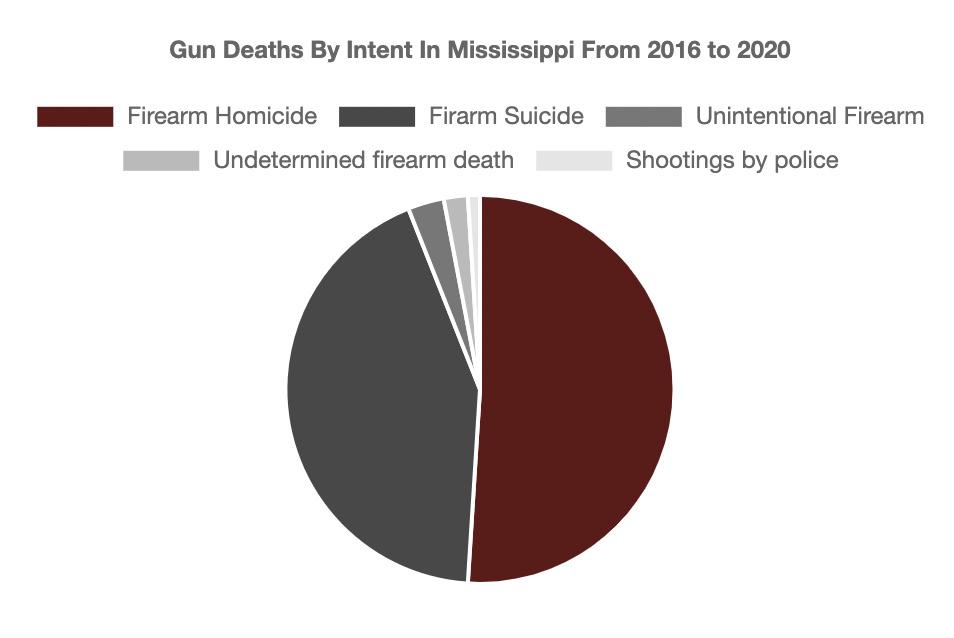
37
OF INTERACTION DESIGN AND ELECTRONIC ARTS
MASTER
Capstone Research
Research
Project Research Dissertation Lian Loke
Research is the pursuit of new knowledge. Design research puts the work of design at the heart of the research enquiry. Students undertook an independent research project under the supervision of Design Lab academics on topics that engaged with contemporary issues, emerging technologies and the needs of industry and community. Projects included representing breakdance in outdoor public projection art, designing for the coexistence of human and non-human creatures in Shanghai, studying how pedestrians respond to visualisations of the predicted path of autonomous vehicles, and evaluating the user experience of creating character animation in virtual reality applications.
Students navigated the winding path of conducting research, starting with a research question to frame their enquiry. In the context of the pandemic and its after-effects, students had to think creatively about engaging with human participants using online tools versus in-person, with the positive consequence of expanding their digital skills for future collaborations in a world reliant on networked communication. Design research can produce many kinds of outputs, from insights into user experience and behaviour, to the generation of novel concepts and prototypes, conceptual frameworks and new methods and tools. Some of the student outputs will make their way into practice, helping to shape the future of the profession and society.
38
User Experience of VR Character Animation Tools Yishan Wang
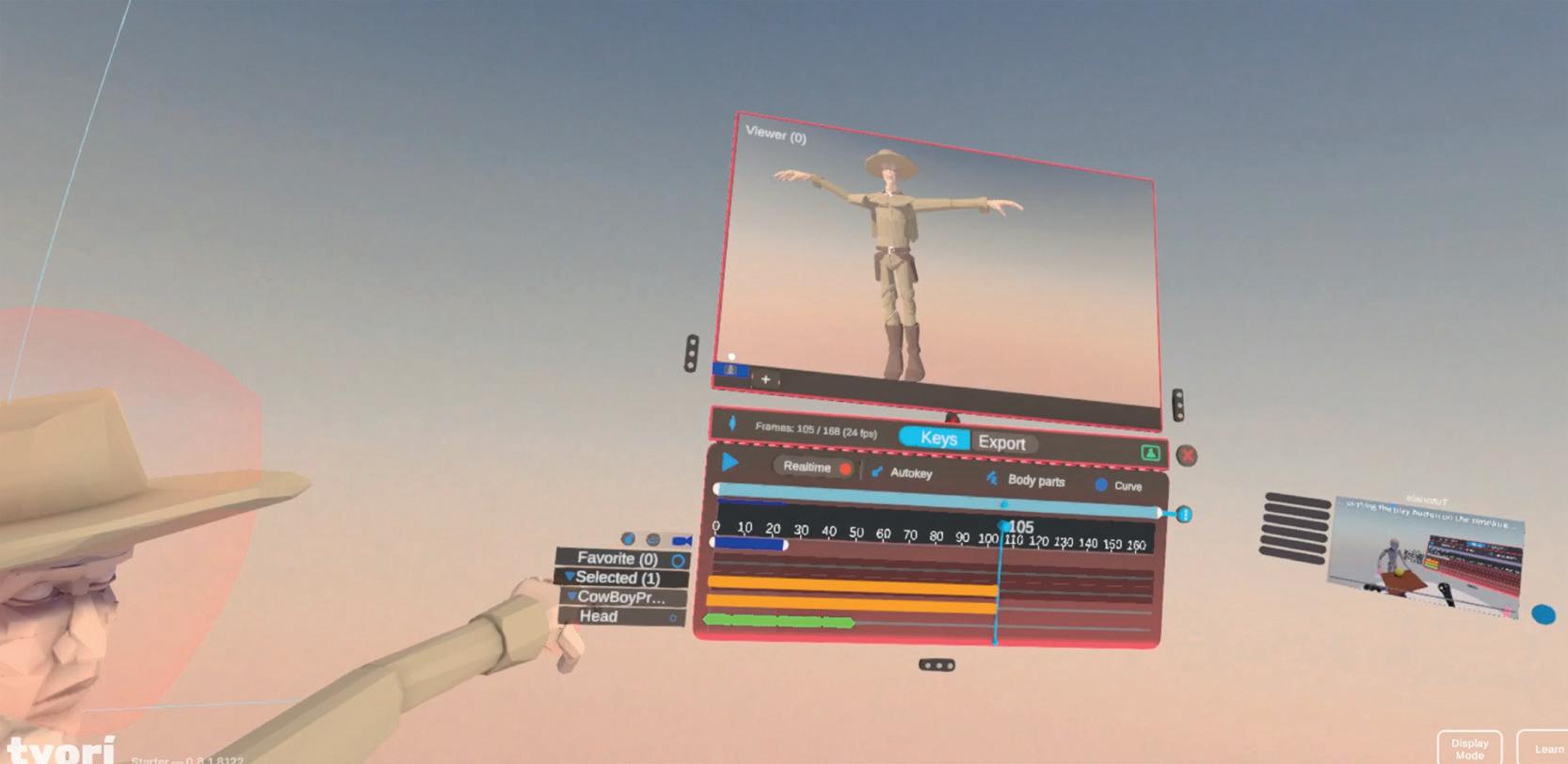
The inherent spatial nature of immersive virtual environments has offered intuitive three-dimensional interactions and greater affordances for character animation production. While previous studies have focused primarily on constructive research concerning the application of VR technology for use in character animation tools, there is a lack of research on the empirical evaluation of existing VR character animation tools in relation to user experience. This research investigates the current interaction patterns for creating character animation in virtual environments and what design considerations are essential for designing VR character animation tools.
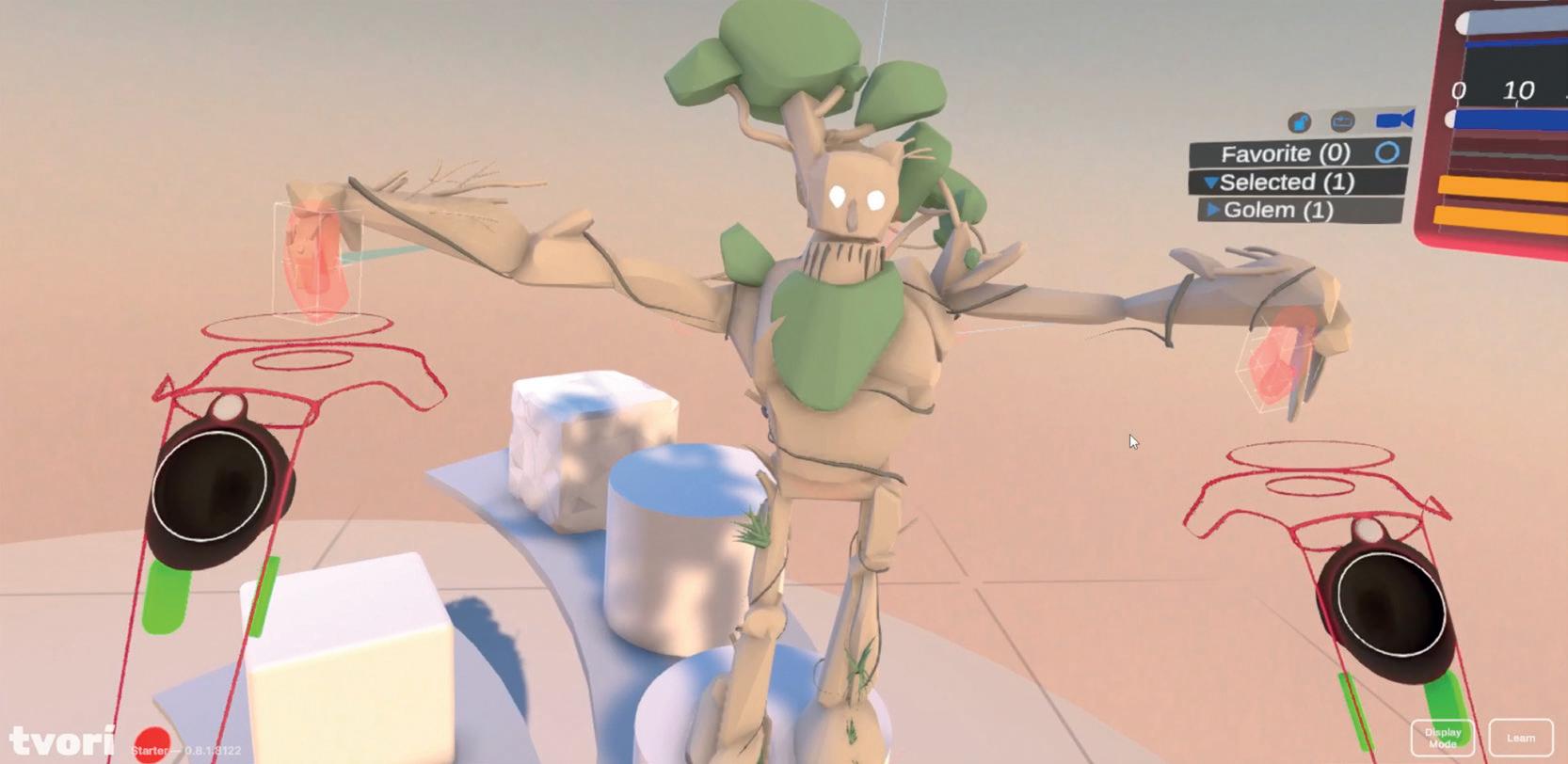
39
OF INTERACTION DESIGN AND ELECTRONIC ARTS
MASTER
The damage to ecosystems caused by the encroachment of humans on the habitats of non-human species is an essential issue in the field of sustainable development. A participatory design process and a design tool are proposed in this research to alleviate this issue by establishing the coexistence between humans and non-humans. The core idea of the design process is to achieve coexistence in design by finding and matching the needs and values of relevant stakeholders. The new design tool named ‘resume’ contains the potential values one stakeholder can provide to others.



40
A design process and a tool about the coexistence between human and non-human creatures Wei Cao
Elevating breakdance through urban media art Wendy Yu
This research was instigated through the desire to generate knowledge around how urban media artists can portray, elevate and showcase breakdance through interactive urban media interventions. The work was centred around studying Sydney’s 143 breaking community with the resulting product designed with the intention of being shown at “dancer’s lane”, outside the International Convention Centre. This work uses the image of local Sydney breakdancers from the 143 community. Dancer’s featured: Rachael Gunn, Sam Free, Mathew Tsang, Duc Hoang, Ota Kohey.
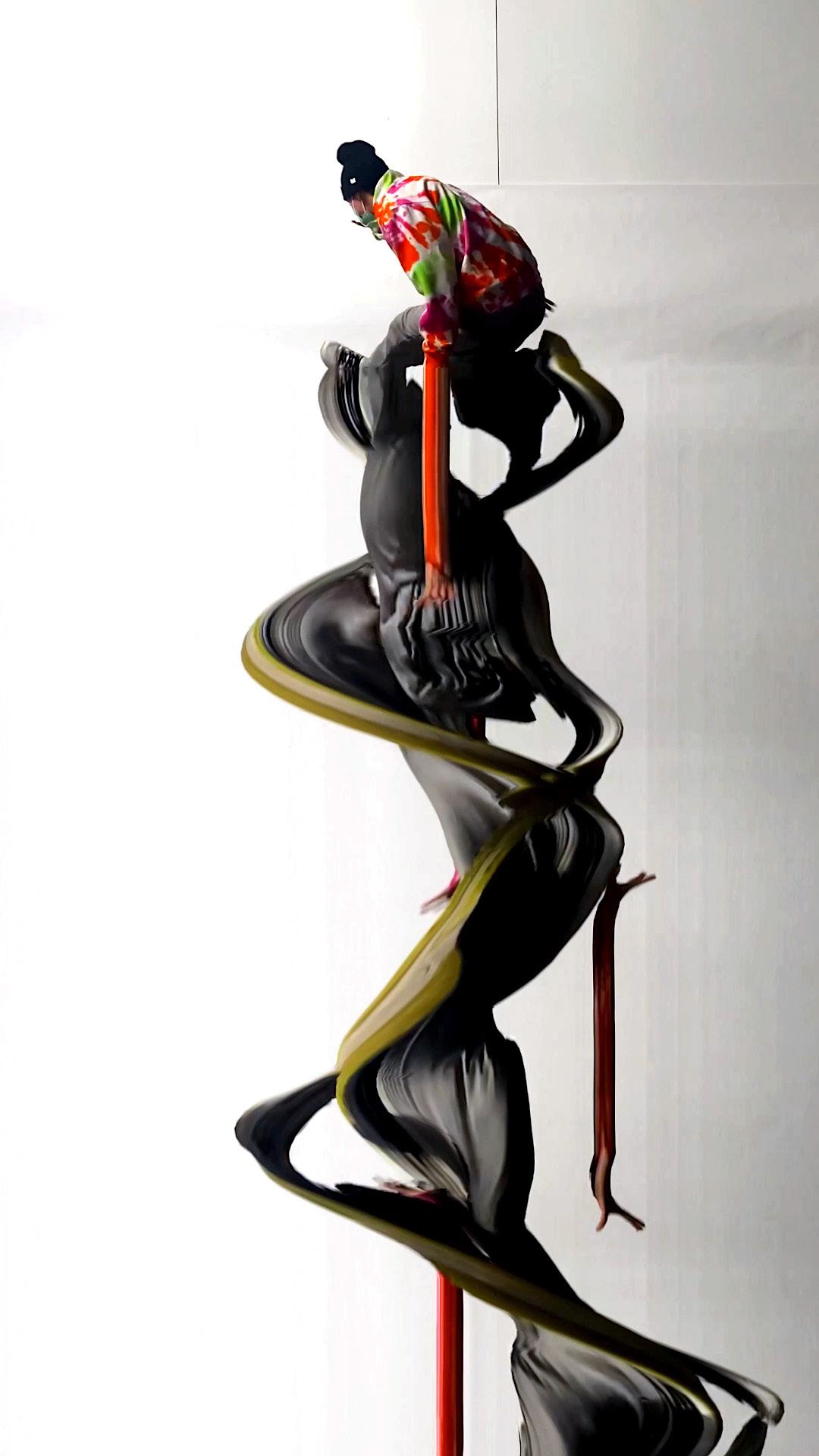
41
OF INTERACTION DESIGN AND ELECTRONIC ARTS
MASTER
42
Master of Design
Introduction
Leigh-Anne Hepburn Master of Design Program Director
The Master of Design program encourages students to challenge traditional perceptions of what it means to live, work, and design in the world today. Design offers a response to some of our most complex global challenges, and these are not easy challenges to solve – they are intricately woven into the fabric of our daily lives, requiring us to look deeply at the intersection of knowledge and practice, and to understand beyond our own disciplines to support and enable change.
In exploring these challenges, our students can study the design of business through the Strategic Design stream, reimagining strategic vision and organisational practices, or design for business in the Design Innovation stream, innovating new products, and services. In applying design practice in their chosen disciplinary streams, students not only design solutions and outcomes, but also develop core transdisciplinary skills in research, leadership, management, and communication, all essential for enabling and supporting future change.
Working on live projects, our students engage with real-world problems faced by businesses, communities, and public-sector organisations. A number of these projects are represented in the works exhibited, demonstrating the breadth and depth of engagements undertaken and the wonderful ideas generated. I commend our students on the professional, creative, and engaged design practice demonstrated throughout their degree, and wish them all the best for their future careers.
Just as the theme of this year’s exhibition is ‘Assemblage’, we, as designers, are also an assemblage of experiences, values, skills, and knowledge – each working to shape our position. As our graduates move forward to begin their careers, this exhibition is an important moment to consider and reflect on positionality. I encourage you all to think deeply about your position, and remember, just as the discipline of design is constantly evolving, so too will your position and practice – so be open new experiences, new learning, and ways of seeing and doing. Good luck!
45
Post-Covid Workspaces
Design Innovation Catalyst
Leigh-Anne Hepburn
The design of workplaces has changed over time resulting from developments in information systems, organisational strategies, and the nature of work. The Covid-19 pandemic created change at a much faster rate than seen previously. Zoom increased daily meeting participants from 10 million in December 2019 to over 300 million by April 2020. Despite technological advances, the cultural shift towards alternative models of meetings has evolved at a much slower rate, and a number of challenges have emerged.
This brief explores and shares the range of alternative meeting formats, with specific consideration of new models and requirements for workplace meetings. Students are challenged to design an intervention that engages relevant stakeholders, identifying and capturing insights that can support the creation and sharing of new knowledge creation. The intervention should identify new approaches that can support workplaces to deliver effective meetings.
Group Support for Mental Health
Design Innovation Catalyst
Leigh-Anne Hepburn
Headspace is the National Youth Mental Health Foundation. They were established in 2006 and provide early intervention mental health services to 12-25-year-olds.
Each year, they help thousands of young people, and their family and friends, access vital support through headspace services across Australia, online and phone counselling services, and vocational services.
Having successfully delivered support online during Covid, headspace is keen to expand their support group offering in Sydney, establishing new face-to-face support groups that meet the needs of their target audience.
However, the organization recognize that in order to establish groups that meet the needs of their target audience, they must understand what is required and desired. Students were tasked with designing an intervention that engages relevant stakeholders, identifying and capturing insights that can support Headspace to establish support groups that meet the needs of young people between the ages of 10-25 years in Sydney.
46
Master of Design Student Index
A Muhammad Ali B
Rohit Byju C
Yuliang Cen Ran Chen Shikeshu Chen Jingming Cui
D Xinyue Du Shubham Dua
H
Aviannisa Putri Hadi Kristen Lynn Hofner Chenjun Hu Xiaofan Huang Xiaozhao Huang
K Phoebe Kate Kershaw L Yanhui Lai Wanting Li Lin Li Xuewen Li Tonghui Li Jiayi Liao Zhongfan Liao Jiamu Lin Xiaoyuqi Liu Jiabei Liu Siqian Liu
M Shuaiqi Meng Zichen Meng Yihui Miao Ruiwen Mo
P Yiyi Pan Zihang Peng Q Yi Qi S Erik Alexander Still Yifan Sun
W Fangtao Wu Y Fei Yan Z Yu Zhang Chong Zhang Hanyue Zhang Yixin Zhao Jingya Zhou Xingyan Zhu Shenshen Zhu Xingyan Zhu Yuqing Zhuang
47 MASTER OF DESIGN
The Future Workplace
In this project, we researched different industries to uncover underlying challenges of the ‘new normal’ of post-covid-19 workplaces. Through interviews and content analysis, we identified that hybrid models were an emerging trend, and virtual collaboration had a significant role in establishing and maintaining employee engagement. In particular, new employees faced significant challenges in hybrid organisations. This project aimed to design and deliver a design intervention that could help new employees overcome challenges, create value in workplaces, and improve potential organisational productivity in the future.

48
Zichen Meng, Aviannisa Putri Hadi, Ruiwen Mo
Work and communication efficiency in Chinas IT industry Shikeshu Chen, Shuaiqi Meng, Yuliang Cen, Shenshen Zhu
The reverse trend of China’s IT industry under the epidemic attracted the attention of the design team. We undertook research with IT employees and our partner organisation, Cambly China to understand how workplaces had shifted. Working closely with staff and managers, we found that remote working made it difficult for employees to maintain stable work efficiency, and privacy may be threatened. Similarly, remote working reduced communication efficiency. We designed and delivered a design intervention that aims to explore how we might improve work communication efficiency and ensure privacy so that employees can be more productive and passionate when working remotely.

49 MASTER OF DESIGN
Each year, a significant proportion of young people from 18-24 experience mental health issues. To respond to this challenge, Headspace, a national youth mental health foundation, is elevating its capabilities to support this age group. In this project, we narrowed our study to focus on international students. We aimed to understand the needs of international students, identifying current needs and pain points. We found that international students experience linguistic and cultural barriers, and discovered they prioritise convenience, privacy, and practicality. These findings can support the design of new services tailored to the needs of international students.

50
International Students and Mental Health Xiaozhao Huang Elena, Jingya Zhou Sally, Wanting Li, Xinyue Du
A Study on Virtual Workspace Dimensions and its Impact on Collaboration in the New Normal Aviannisa Putri Hadi
The Covid-19 pandemic changed the way people and organisations work. The existence of collaborative virtual workspaces (CVW) is more important than ever before, as a variety of solutions had been designed to enable virtual collaboration within businesses in support of remote or hybrid working. This research aims to analyse the affordances and production of space that happens within different types of CVWs to investigate how each dimension of space helps people collaborate virtually in the new normal. With this knowledge, the project proposes a guiding framework for designers or businesses to create successful virtual collaboration strategies.
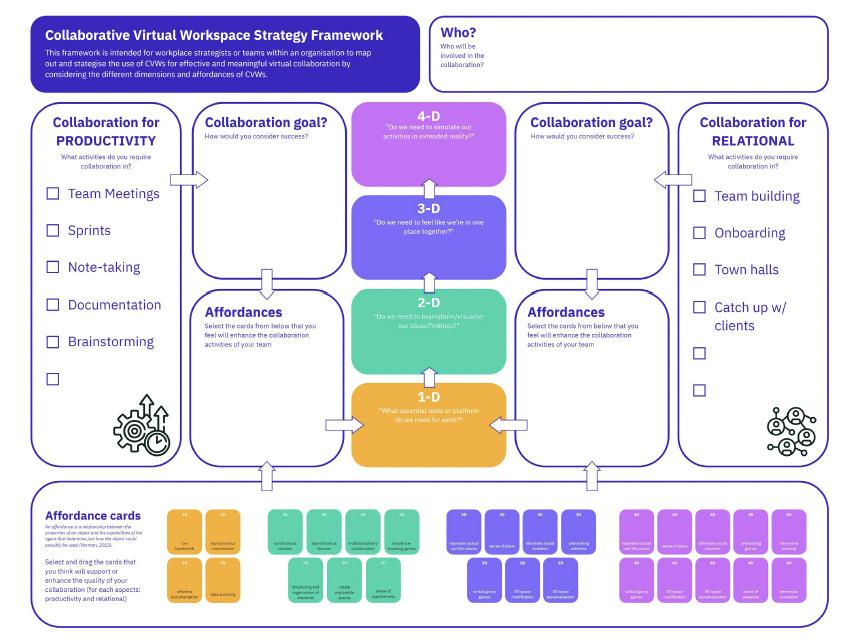
51 MASTER OF DESIGN
An Design Research Approach to Understanding the Influence of Ethics on Design Students
 Kristen Hofner
Kristen Hofner
There is an increasing awareness of the importance of considering values in design, especially in design education. While current research emphasises the importance of values concerning design, few research studies addresses the perspectives of students. This design research aims to understand the values and attitudes of ethics in design from a student perspective, through surveys and interviews. The project concludes by proposing criteria for a more inclusive analysis of ethical issues in design, enabling a more profound understanding of experiences, context, and phenomena from a student perspective.
52
The Future of Strategic Design Education
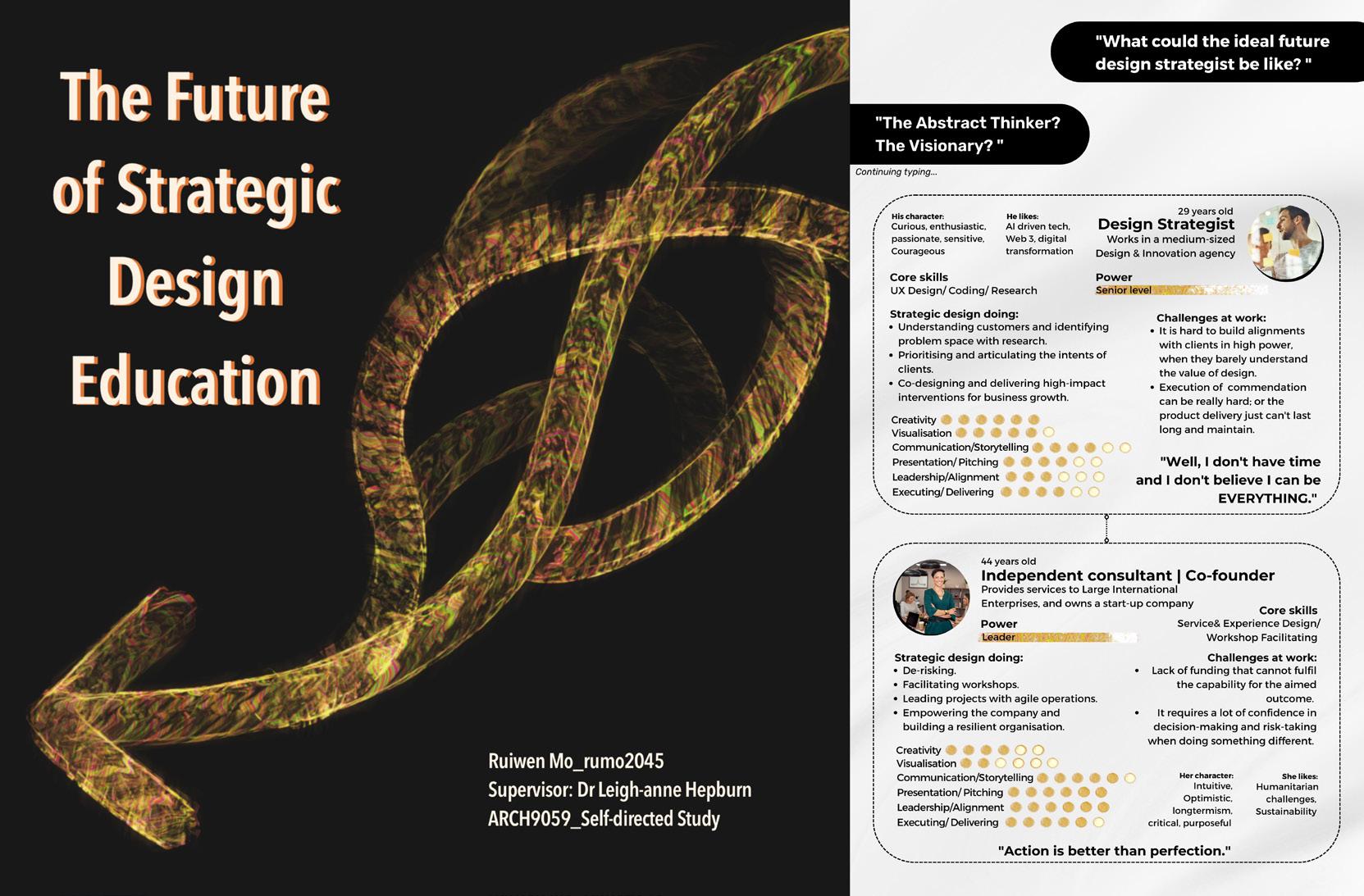 Ruiwen Mo
Ruiwen Mo
This project sought to explore the value of Strategic Design and understand the skills and capabilities required to become a strategic designer. With over 1000 minutes of interviews with 20 leading design practitioners across Australia, America, and the UK, this research uncovers many strategic design journeys and illustrates how the role is understood in industry. Importantly, these findings indicate an emerging need for strategic design in organisations and suggests how formal strategic design education might play a purposeful role in preparing graduates.
53 MASTER OF DESIGN
54
Bachelor of Design Computing
55
Introduction
Joel Fredericks Bachelor of Design Computing Program Director
As 2022 draws to end we find ourselves reflecting on another year of challenges, lessons learnt, and goals achieved. From extreme weather events in Australia, the ongoing global pandemic, and hybrid learning environments, our lives throughout the year have continued to be disrupted in one way or another. Despite these complexities, our Design Computing students have persevered by maintaining a strong desire for learning and practice through on-campus and remote education experiences. Throughout their degree, students have developed capacity to create new design offerings for products, services, and systems, successfully engaged with industry partners, and demonstrated their ability as design leaders of the future. Over the past 20 years the Bachelor of Design Computing has prepared our students as future digital designers who are socially conscious, humancentred, and technologically capable.
This year we come together for the return of a full-scale inperson graduation show, the first since 2019, as an assemblage of collaborators, creators, educators, and peers. The show will be a great occasion to reconnect with each other to celebrate and showcase the fantastic work of our graduating students from the School of Architecture, Design and Planning. To our graduating cohort, congratulations. This is an exciting time to be a designer as the demand for digital products and services is greater than ever. As you embark upon your new adventures and progress through your careers, I urge you to always remember why you chose to study Design and the sacrifices you endured to make it happen. Be courageous and explore your skills to design thoughtful, enjoyable, and inclusive user experiences.
57
Appropriate Solutions for All
Interactive Product Design Studio Advanced Project Design Studio
Callum Parker
Sometimes, the best design solutions flow from simple yet sharp insights uncovered from research, and might require only minimal technology. This project asks for an iteratively conceptualising, designing and prototyping of a novel solution that is clearly linked to one (or several) of the 17 Sustainable Development Goals identified by the United Nations.
The 17 Sustainable Development Goals are: (1) No Poverty, (2) Zero Hunger, (3) Good Health and Well-being, (4) Quality Education, (5) Gender Equality, (6) Clean Water and Sanitation, (7) Affordable and Clean Energy, (8) Decent Work and Economic Growth, (9) Industry, Innovation and Infrastructure, (10) Reduced Inequality, (11) Sustainable Cities and Communities, (12) Responsible Consumption and Production, (13) Climate Action, (14) Life Below Water, (15) Life on Land, (16) Peace, Justice and Strong Institutions, (17) Partnerships to achieve the Goal.
Students have adopted design strategies such as participatory design, co-creation and co-design, service design, design for social innovation, inclusive design, and open innovation. They have also adopted a participatory design and co- creation approach using existing technologies or you may find opportunity in contemporary developments in technology, such as 3D printing, digital fabrication, citizen sensing, the maker movement, the sharing economy, big data, social networks, IoT, gamification, new sensors and actuators, and Augmented/ Virtual Reality, to name just a few.
Tutors: Dawei Zhou
Gabrielle Hong Valencia Yun Zhuosi Lai Cathy Zhi Wendy Zhang Jay Watts
58
Bachelor of Design Computing Student Index
A Ashley Abalajon Daisuke Ajioka Rachel Pinar Amin Liam Carey Annesley
B Renhao Ba Yiguan Bai Justine Isabel Bautista Matthew Brady
C
Jessica Caroline Cabrera Yifeng Cai Zeynep Canli Leon Cao Shiraz Center Hin Ching Chan Chun-Han Chen Min Qi Chiu Zhi Qian Chiu Rumbidzai Mitchelle Chiwara Seri Choi Jun Se Choi Georgia Cohn
D
Joshua Del Rosario Katherine Andrea Tan Di Bona
E Alicia Gabrielle Ellis
F Alec Christian Faeste Entong Feng Amelinda Raissa Fortuna Michaela Catherine Franz
G Vasavi Garg Muzi Geng Imogen Rose Gribble Yixiao Gu Sucianna Gunawan
H
Jesslyn Harianto Cameron Horne Xintong Hou Shelby Grace Howden Joanne Hsia Angus Hu Dominic Hu Hongbin Huang Michelle Yun Huang
K
Juhee Jang Jingyan Jiang
Justin Yoon-Tae Jiang Yang Jiao Anshuai Jin Yu Jin
K
Emily Yena Kim Lillian Elisabeth Knothe Shoichiryu Kozuki
L Raghupati Lal Edison Lam Tomas Mitchell Lawton Ho Bao Chau Le Rachel Jing Lee Flinn Maverick Q Leupuscek Borui Li Yangfan Li Jingjie Li Zehui Li Yuchen Li Siyuan Li Chen Liang Chaehee Lim Amber Sara Linz Imogen Marnie Litchfield Yan Liu Antong Liu Yantong Liu Songzhe Liu Shengdong Liu Jun Xiang Loh Eva Ly
M
Diya Marwah Robert John Dominic Mchugh Cameron James Mcknight Amy Caitlin Mclean Li Yun Men Joon Young Moon Nicole Carmel Moran Kim Anh Ngo Bui Trang Khanh Hoang Nguyen
O
Alton Zheng Chen Ong P
Sangmin Park Ethan Daniel Pemberton Erin Phinn Aidan Mark Puse
Q Tian Qin Yu Qin R Laila Orna Reuven Harrison William Ronnie Lily Ross-Harper S
Peijie Shuai Christel May Smith Lucy Victoria Smith Zara Emily Smith Kelly Pei Zhi Su Heling Sun Tianle Sun T Chengrui Tang Liuhui Tang Brooklyn Tanovic Mahiat Tasnim Jason Tu Thai India Frances Thomson Miaomiao Tian
V
Swaetha Vasudevan Trisha Anne Vincent W
Henry Stuart Walker Yi Wan Xinnan Wang Wenhao Wang Zhenzhen Wang Zihe Wang Tyson Wellings Sheng Wen Sajitha Jayanga Bandara Wewegama Michael Lee Wong Yen-Ting Wu X Ziyi Xu Y
Kristin Hae-Shin Yang Zhousi Yang Xiongjian Yang Yuxin Yang Junyu Yao Felicia Chung Hang Yip Zhenyu Yue Z
Xinyue Zhang Xinyi Zhang Xin Zhang Wenxu Zhang Fengying Zhang Jie Zhang Jessie Zhang Fengnian Zhao Xiaowei Zheng Bodan Zheng Miaoyan Zheng Victor Guan Yi Zhou Ying Yi Zhu Yaxuan Zou
Martin Kapr Emma Jade Kesby Farhan Mahmud Khan Jasper Kilkelly-Thieme Milla Kim
Habib George Salem Elsa San Dominique Sarazen Soren Saville Scott Rei Setogawa Fariha Noshin Shaiyara Tianchen Shao Jiaming Shen Yiran Shen
59 BACHELOR OF DESIGN COMPUTING
Idle
Idle is a digital solution in the form of a tablet application centred around meditation and mindfulness. Idle was developed to provide tools to improve health and wellbeing in the ER waiting room environment. Idle addresses the key user needs of distraction and communication that was identified during extensive research. Although the problems of the ER waiting room cannot be solved with a single solution, we believe Idle can improve the health and wellbeing of patients while waiting for medical care.
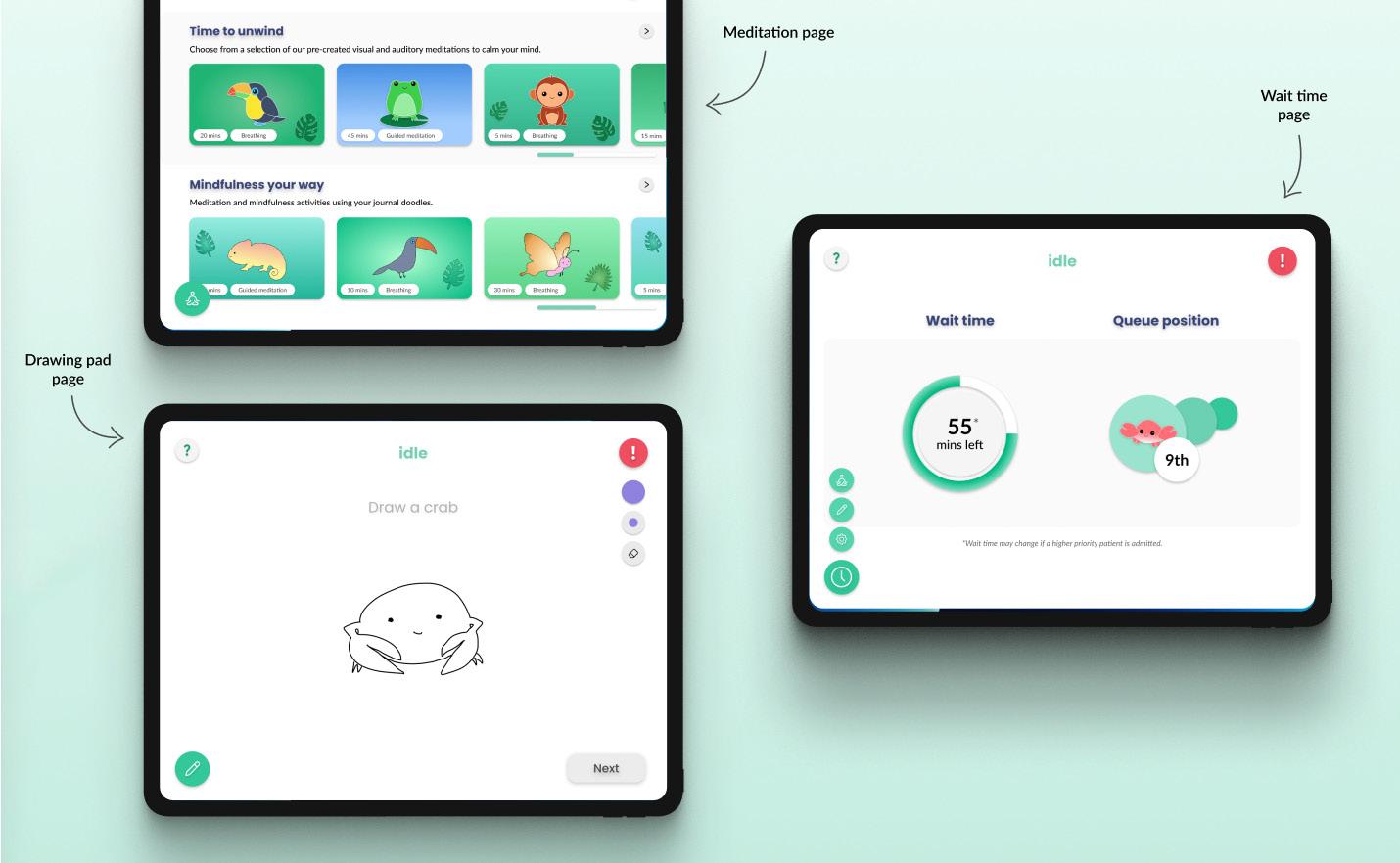

60
Lucy Smith, Lily Rose-Harper, Imogen Gribble, Georgia Cohn
Karbon is a mobile application designed for sustainable transport. As the transportation sector is the central cause of carbon emissions emitted by urban cities, the app provides incentives for users to utilise greener methods of transportation such as public transport. It does this by providing them with an intuitive overview and feedback of their carbon footprint in a relative and understandable format, therefore allowing them to make better informed choices. By providing this feedback, the app aims to foster motivation for the user to be more sustainable, reduce their carbon footprint and save money.


61 BACHELOR OF DESIGN COMPUTING
Karbon
Habib Salem, Joanne Hsia, Joshua Del Rosario, Leon Cao
Journee
Substance abuse often stems from maladaptive coping mechanisms. Young children model their parent’s behaviour and develop coping mechanisms that stick with them for life. Aware of this impact, parents consult resources to inform their parenting. When interviewed, parents expressed frustration towards these resources. Many of these resources require too much time to consume and any knowledge acquired is hard to retain. Journee is our response to this gap in the market, utilising gamification to create a personalised, engaging experience that fits within parents’ busy lives.

62
Jason Thai, Tyson Wellings, Harrison Ronnie, Daisuke Ajioka
ParentingBoost
Jingjie Li, Antong Liu, Tiana Tian, Xinyi Zhang
ParentingBoost is a multi-player browser game that informs, educates and entertains expectant parents with high-quality and appealing prenatal and postnatal knowledge game missions that help improve the mental health of parents as well as the health of newborns. New parents without newborn care skills often feel anxious before and after childbirth, which is the most common negative emotion amongst new parents. It is designed to cover four main stages of becoming new parents: preparing for pregnancy, pregnancy milestones, labour & birth and after childbirth.

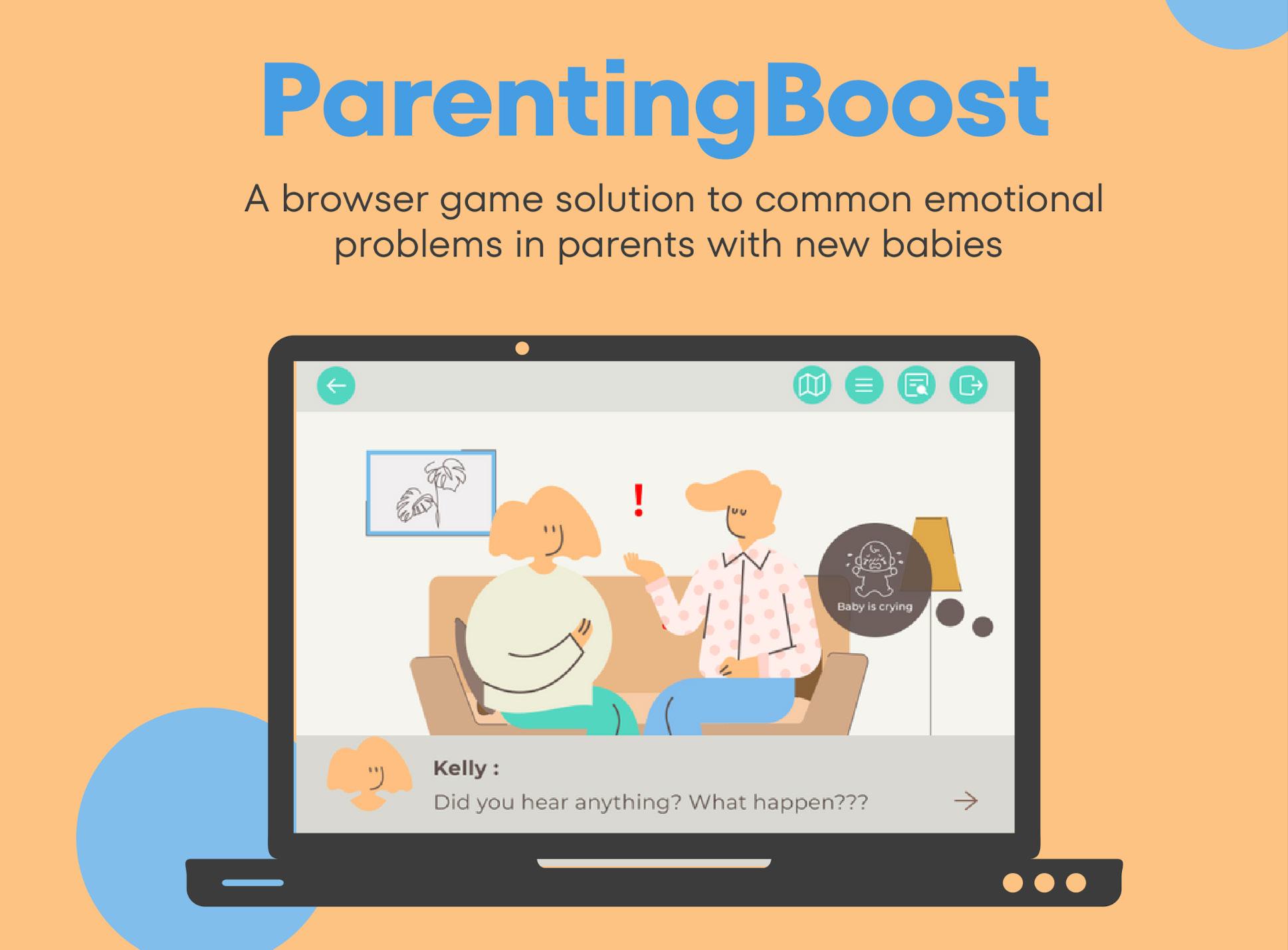
63 BACHELOR OF DESIGN COMPUTING
Recyc l ABLE

The concept of Recyc l ABLE was born after conducting background/user research and discovering that recycling was not always accessible or motivating and people often did not know how to recycle products. It is a smart bin system placed in public areas that encourages positive recycling habits. It identifies what waste materials the user is disposing, prompts the user on which bin to place it in and then tracks their data over time to allow them to reflect on recycling habits. It aims to provide a unique and playful experience of recycling enthusing the average citizen. The idea is scalable and adaptable so that users are ideally able to recycle almost any type of material at an appropriate location at any time of day.

64
Michaela Franz, Alton Ong, Jessica Cabrera, Dominic Hu
Omen – A Visual Novel Storytelling Game
Barry Li, Shendong Liu, Yaxuan Zou, Alvin Jin
Omen is a point-and-click horror puzzle game, set in a world underneath the water. We hope to help players empathise with the situation of marine life under the threat of nuclear population. Our inspiration is based on news that Japan would be releasing nuclear wastewater accumulated from the Fukushima accident into the Pacific Ocean. The main character is a fish called Bob, who has his own work and life like human society. Faced with the nuclear wastewater discharged by human beings, his peaceful life will be gradually changed by the invasion of nuclear radiation and radioactive sediment.

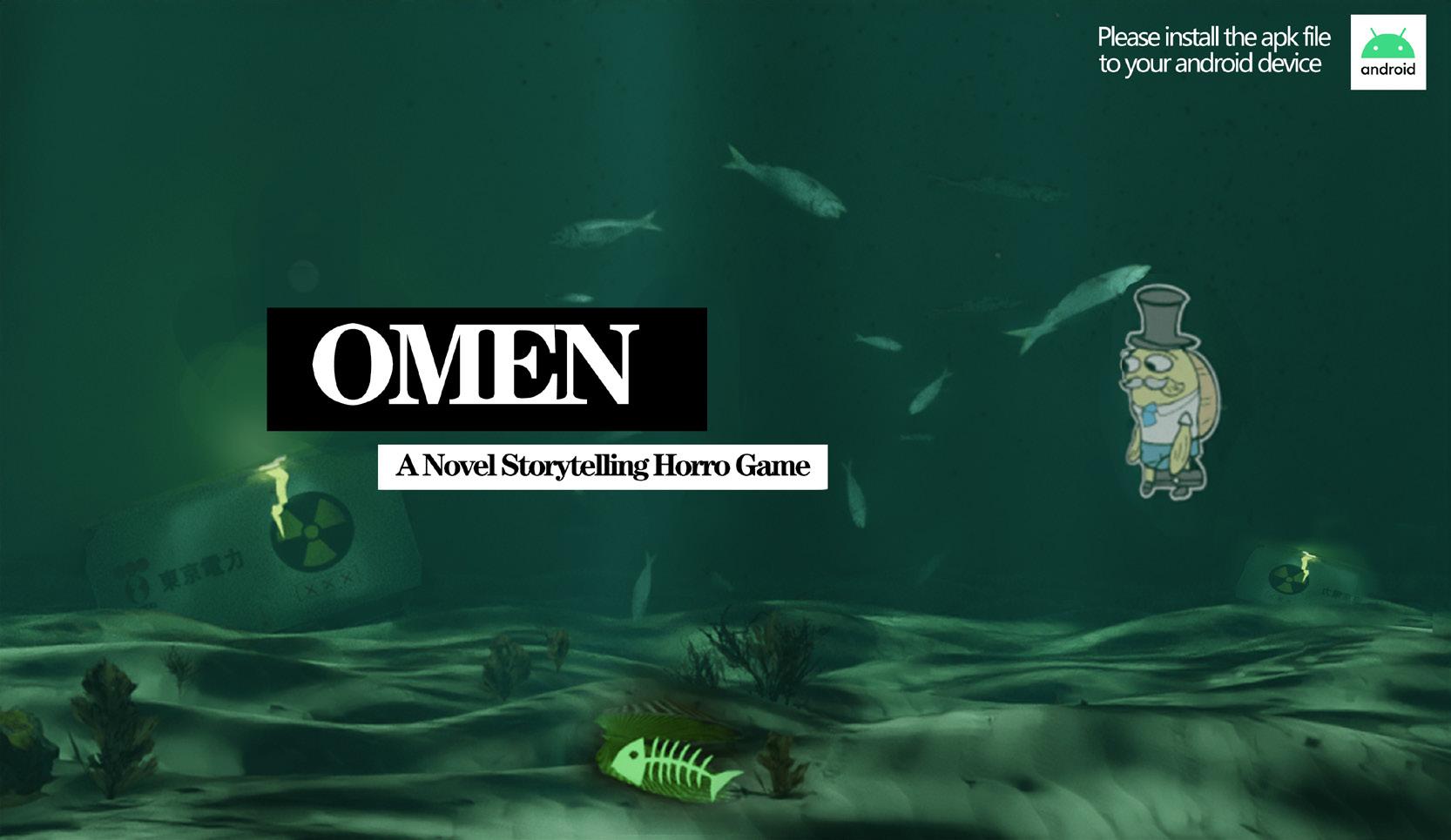
65 BACHELOR OF DESIGN COMPUTING
Synthium
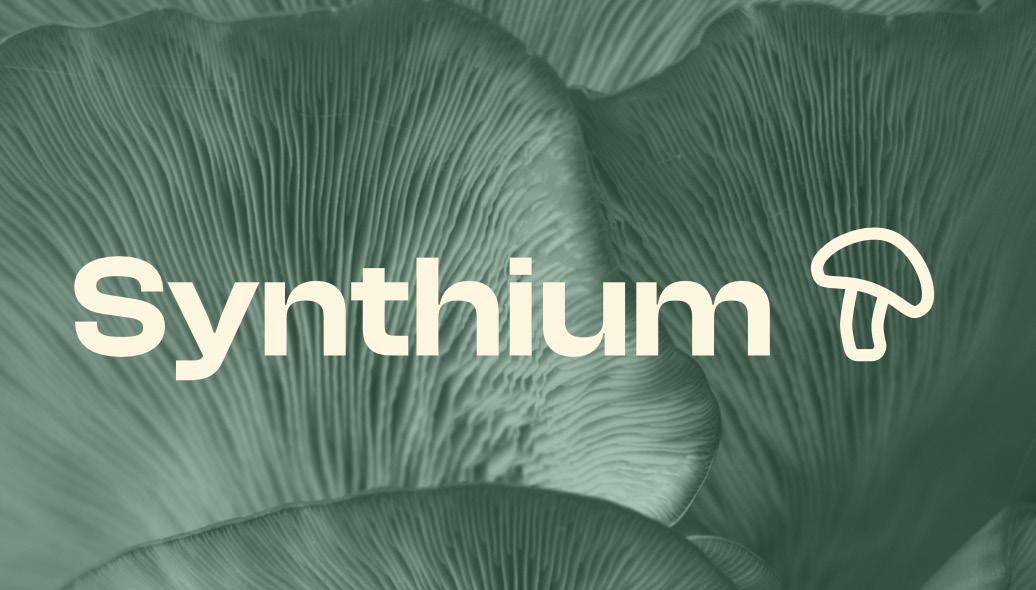
Synthium is an interactive multisensory experience, utilising the naturally occurring frequencies produced by mushrooms to create a sound and light system. Frequencies are expressed as ambient low-fidelity sounds, changing in response to physical contact. Through purposeful and considered design, Synthium facilitates the restoration of the human relationship with the natural within urban environments, assisting in the transition to a post-anthropocentric approach leading to truly sustainable smart city development. This design solution is an inaugural step toward a sustainable and resilient future.

66
Aidan Puse, Brooklyn Tanovic, Lillian Knothe, Shiraz Center
Hology
Cameron Mcknight, Rei Setogawa
Hology is a home energy meter designed to give households information, motivation and a sense of control to reduce energy costs using a hologramlike visualisation. The core functionality of Hology is the dynamic visual representation of a household’s electricity usage depending on the level of usage. Another functionality of Hology is the information mode. Rather than themed animations, information mode displays a dynamic line chart indicating the users’ energy usage, a point of comparison, and energy usage costs.

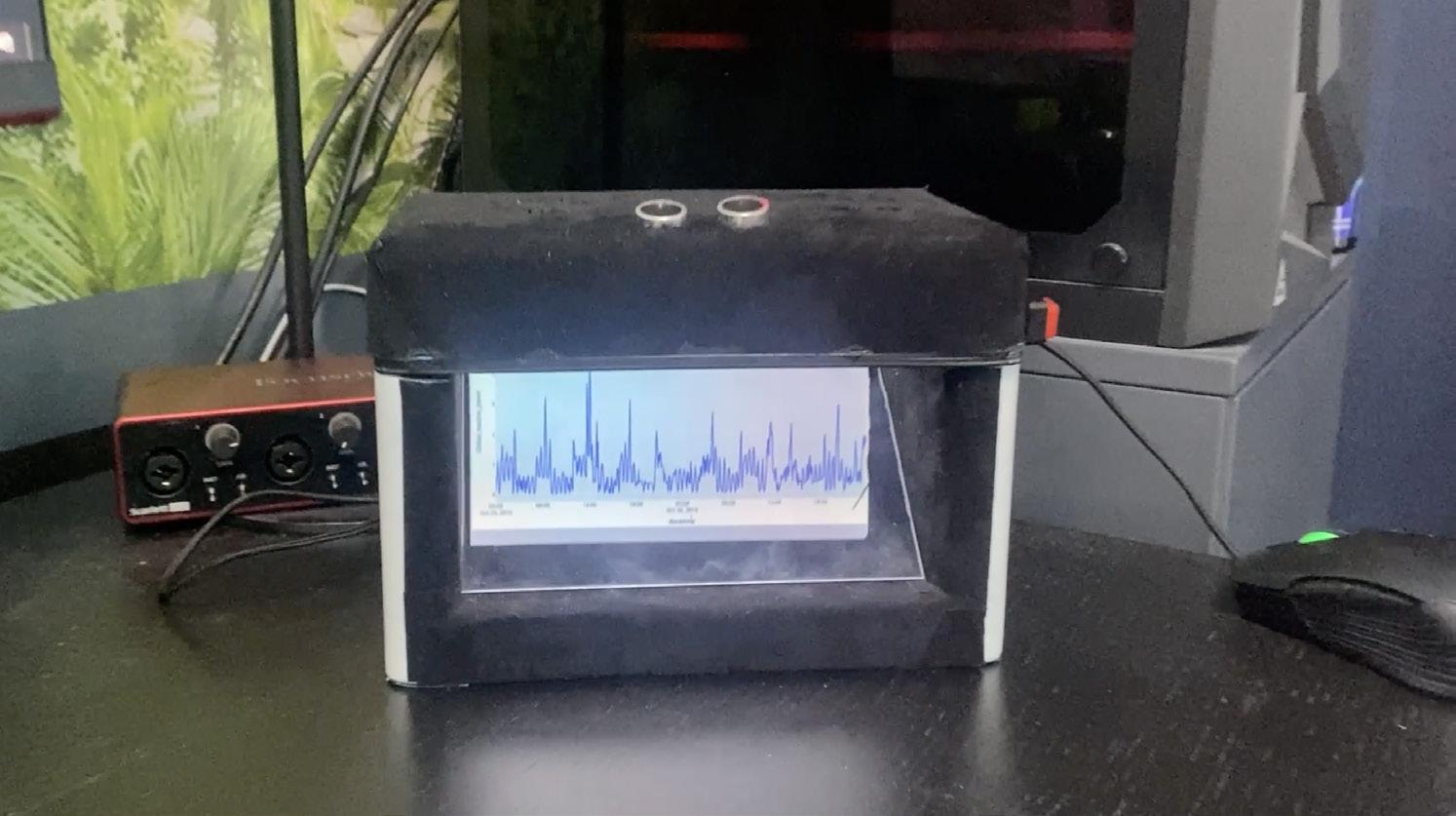
67 BACHELOR OF DESIGN COMPUTING
Safer Together
Travelling or commuting alone at night can be a daunting and often worrisome experience, with fear of potential assault or harassment. Safer Together solves this problem by introducing a feeling of companionship, familiarity and safety to anyone alone at night. Our concept connects commuting users who feel unsafe and matches them with a friend to walk together. It uses an app to pair users and send travel information to loved ones. The accompanying keychain is a symbol of safety and allows users to recognise each other when in discovery mode.

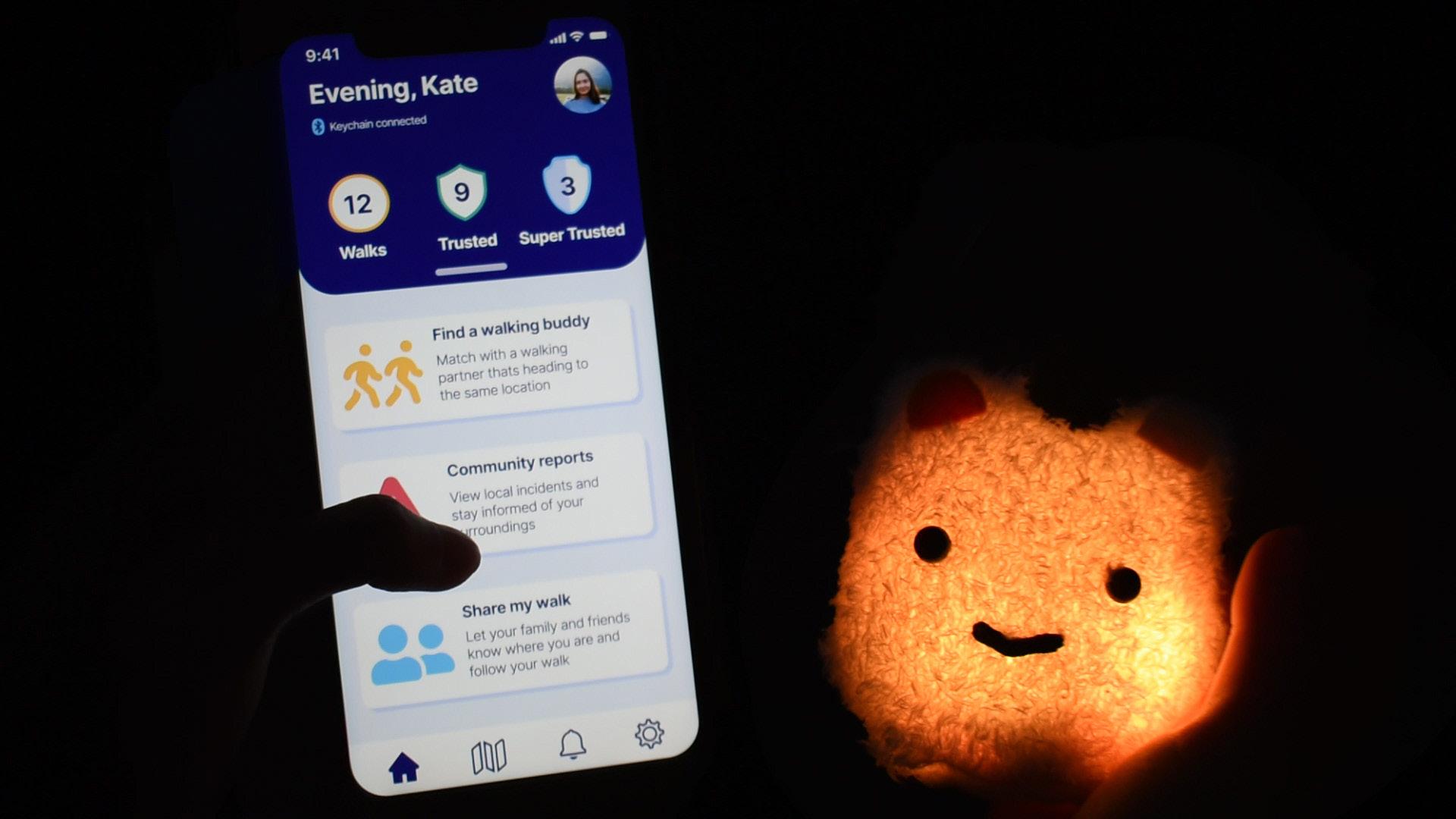
68
Felicia Yip, Jayce Jie Zhang, Raghupati Lal, Ying Yi Zhu
Vision3000
Vision3000 provides users with the cultural and natural history of their local area and how it diminished over time due to Sydney’s rapid urbanisation. Within this design we want users to be able to create a sense of belonging in future sustainable cities to ensure they take ownership in maintaining and managing natural heritage. This project allows for the user to scroll through an interactive timeline of Sydney and then can create their own sustainable city that could possibly be used as feedback for developers and councils.


69 BACHELOR OF DESIGN COMPUTING
Alec Faeste, Ethan Pemberton, Jasper Kilkelly, Robbie Mchugh
Join Me

Tian Qin, Wenxu Zhang, Yiran Shen, Ziyi Xu
Join Me is a neighbourhood-based community designed to mitigate the safety risks and insecurity among females living alone in Chinese cities. The homepage forum acts as a safe space to facilitate mutual help and offers daily articles to educate users about effective self-defence strategies. Treasure-hunting events around the local community encourage women living alone in the same neighbourhood to network with each other. If contingencies happen, Join Me offers an emergency shortcut button to contact the neighbourhood security team for immediate assistance.
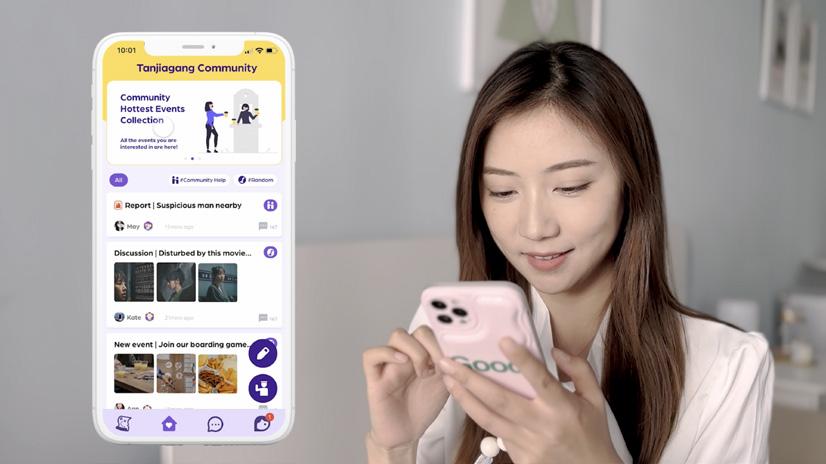
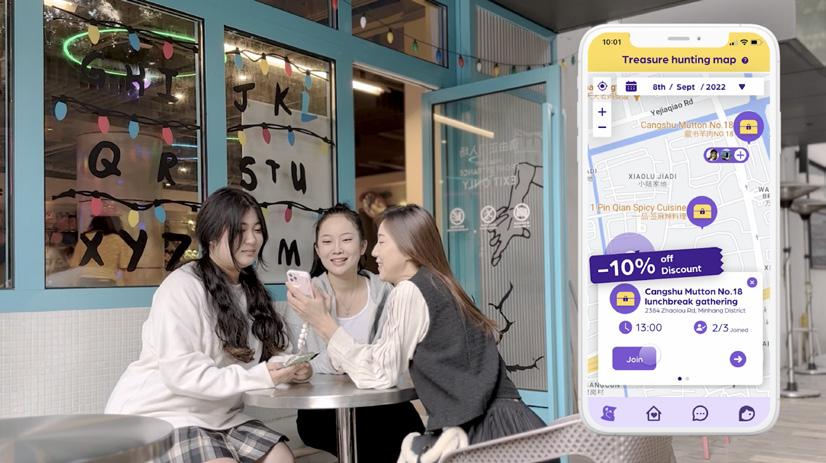

70
ID8

ID8 is an LED signage that assists with on-street parking in high-density areas. Using vibrant colours and clear wording, it is a replacement for current signs in cities like Sydney. The current signs are often confusing to passing commuters, have led to massive fines, congestion and contribute to commuter stress.
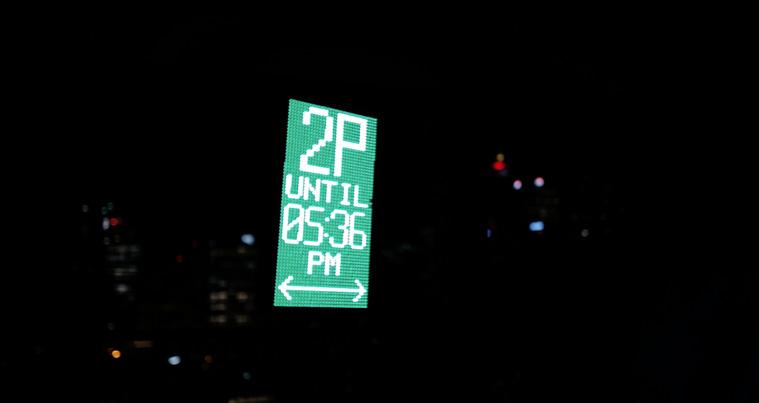
71 BACHELOR OF DESIGN COMPUTING
Katherine di Bona, Diya Marwah, Jessie Zhang, Chen Liang
72
Public Programming
Lectures and Events
8 April
Your Brain on Design - New Field of Design Neurocognition
John Gero
3 May
A Huge House Lecture Series: Atelier Scheidegger Keller Christian Scheidegger, Jürg Keller
4 May
A Huge House Lecture Series: pihlmann architects Søren Thirup Pihlmann
5 May
A Huge House Lecture Series: David Kohn Architects David Kohn
6 May
A Huge House Lecture Series: 6a architects Tom Emerson
19 May
New World: Harry Seidler, Brazil and the Australian City Philip Goad
26 May
The Real-World Web of Locative Media Rui José
31 May
Australian Architects Declare Liz Westgarth, Valerie Saavedra, Claire Bowles
2 June Reconciliation Conversations 2022 Australian Institute of Architects
7 July
NAIDOC Screening: Where the Water Starts Elle Davidson, Michael Mossman, Olivia Hyde, Richard Swain, Mandy King, Fabio Cavadini
27 July
Rothwell Research Seminar: The Interplay of Architecture and Urbanism
Anne Lacaton, Jean Philippe Vassal, Hannes Frykholm, Michael Zanardo, Callantha Brigham
28 July
Rothwell Chair Public Lecture: Living in the City Anne Lacaton, Jean Philippe Vassal
16 August 3D Origami Design via Curve Folds Jun Mitani
19 August How Rotor Works Lionel Devlieger
24 August
Unfolding the USYD Library: Books-as-essays Andrew Leach
25 August
Locating Giurgola Paola Giurgola, Richard FrancisJones, Richard Thorp
30 August
Unfolding the USYD Library: Curating curators books Kate Goodwin
2 September House Around a Hearth Andrew Power
6 September
Unfolding the USYD Library: Books that mark a time Clare Cooper
7 September
CIRCA Journal Symposium: Orientation: Architecture and Activism
Michael Mossman, Tiffany Liew, Amiera Piscopo, Seth Dias
9 September
Proving your Point Mike Hewson
14 September
CIRCA Journal Symposium: Location, Narration and Atmospheres: Between Film and Architecture
Michael Tawa, Luke Hayward, Caleb Niethe
14 September
Unfolding the USYD Library: Opening up practitioners books Guillermo Fernández-Abascal
17 September
An Endless Waste Stream by Second Edition
Amy Seo, Shahar Cohen
19 September
Festival of Urbanism: Ethical Futures? Towards systemic urban integrity and the just city Yvonne Weldon, Varsha Yajman, Alex O’Mara, Susan Park, Claire Connelly
19 September
Festival of Urbanism: Saving Sydney: ideas for the future metropolis
Michael Rodrigues, Kerri Glasscock, Chris Gibson, Lyndal Hugo, Philip Thalis, Prof Michelle Leishman, Elizabeth Farrelly
19 September
Committee for Sydney: Designing for Country Dillon Kombumerri, Michael Mossman, Lisa Fathalla, Callantha Brigham
20 September
The Inaugural Penelope Lecture: Frottage City Jean-Louis Cohen
20 September
Festival of Urbanism: Platform urbanism? From smart to autonomous city futures
Niels Van Doorn, Sarah Barns, Justine Humphry, Rory Brown, Sophia Maalsen
21 September
Unfolding the USYD Library: Solar manuals Daniel Ryan
21 September
Festival of Urbanism: Future Infrastructure: Innovation, governance and sustainable transitions
Haruka Miki-Imoto, Tim Bunnell, James O’Keefe, Aidan While, Tooran Alizadeh
21 September
Festival of Urbanism: Australias future housing system: Renovate or detonate?
Jenny Leong, Rebecca Pinkstone, Leo Patterson Ross, Carrie Hamilton, John Engeler, Ben SpiesButcher, Nicole Gurran
74
23 September
Festival of Urbanism: Food Futures in Urban Places: Solidarity, Circularity and Transition Abby Mellick Lopes, Gabriele Morelli, Michelle Zeibots, Stephen Healy, Adrienne Keane
30 September
Existing Rocks and New Rocks by Copy Nature Office Edward Cook
5 October
Unfolding the USYD Library: Mandatory books Michael Mossman
7 October
Going with the Flow by Cateseye Bay Sarah Jamieson
12 October
Unfolding the USYD Library: Publications for architects Maren Koehler
14 October
Friday Lecture Series: Myths, Dreams and Fairy Tales Takeshi Hayatsu
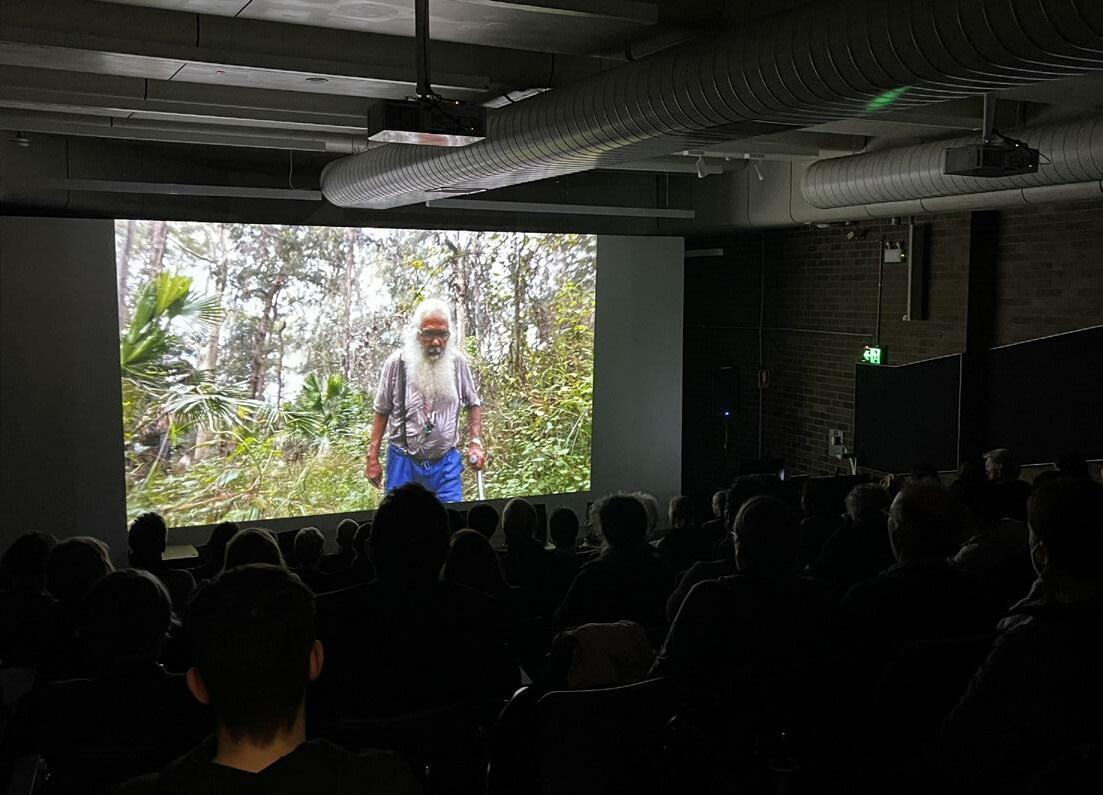
19 October
Unfolding the USYD Library: Fine books Koji Ryui
21 October
Architectural Behaviolorogy by Atelier Bow-Wow Momoyo Kaijima
28 October
A Pavilion for Doing Everything Theo de Meyer
6 November
The Modern House is History
Richard Leplastrier AO, Catherine Lassen, Cameron Logan
6 December
The International Housing Crisis, and what to do about it
David Madden, Dallas Rogers, Kurt Iveson, Amanda Tattersall
75
NAIDOC Screening: Where the Water Starts
Tin Sheds Gallery
Tin Sheds Gallery Advisory Committee
Jennifer Ferng
Kate Goodwin
Luke Hespanhol
Lian Loke
Lee Stickells
Michael Tawa
Gallery Manager
Iakovos Amperidis
Curatorial Lead
Kate Goodwin
Tin Sheds Gallery is a contemporary exhibition space located within the Sydney School that has been a site for radical experimentation for over 50 years. It provides a public platform for projects that inspire the imagination and ignite critical dialogue - addressing the diverse forces that shape the built environment locally and internationally.
The Tin Sheds officially opened in 1969 as an autonomous art space on City Road within the University grounds, facilitated by artists, academics and students. It spurred a pivotal historical movement in Australian art, nurturing cross-disciplinary experimentation and politically orientated practices for several decades. In 1989 it officially joined the School delivering art workshop classes and in 2004 relocated onsite to purpose-built gallery and became operationality integrated with the School.
The Gallery’s mission is to foster and advance debate about the role of architecture, art, design and urbanism in contemporary society through the production of innovative exhibitions, publications and related activities.
76
Bill Lucas: Architect Utopian
24 February – 26 March 2022
Curated by Peter Lonergan
This exhibition takes us into the extensive archive of Bill Lucas (1924–2001), revealing the aspirations, ideals and works of one of Sydney’s foremost late 20th century architects. It includes a feast of previously unseen archival drawings, photographs, artworks, private writings and public documents, illustrating his trajectory from conventional to increasingly unconventional practice with projects that were invariably ahead of their time.
Lucas was an architect idealist who, often through unconventional means, sought to bring about social and environmental change to make the world a better place. His early career, working with his wife Ruth, was spent designing and often instigating, innovative single and multi-residential projects, furniture and community developments. Lucas would meticulously refine a design informed by cost, materials and construction, to reach the optimum architectural solution for the client and site. By the mid-1970’s he ceased conventional practice, instead working without a fee, advising, teaching and problem-solving projects with wholistic systems-thinking.
 Exhibition Team: Cracknell & Lonergan Architects, Graphic Expression, Marilyn Karet, Peter Lucas.
Image credit: Maja Baska
Exhibition Team: Cracknell & Lonergan Architects, Graphic Expression, Marilyn Karet, Peter Lucas.
Image credit: Maja Baska
Art and Activism in the Nuclear Age

7 April - 14 May 2022
Curated by Yasuko Claremont
This exhibition takes place more than 75 years after the nuclear catastrophe caused by the US atomic bombing of the Japanese civilian populations in Hiroshima and in Nagasaki in August 1945. Over the subsequent decades, reactions to these and many other nuclear atrocities have spurred a wide range of resistance, protest, documentation and artistic expressions. The exhibition draws on this deep history of commentary to bring attention back to the continued threat of nuclear war, unmitigated expansion in the use of nuclear technology, nuclear accidents and the impacts of nuclear testing. The crisis in Ukraine is another terrible reminder of the nuclear knife-edge on which the world is precariously balanced.
The exhibition aims to encourage viewers to reflect on the potency of both art and activism, to overcome popular complacency, to arouse empathy for the victims, incite resistance to the continued proliferation of nuclear weapons, and to force us to ask the momentous questions: What have we done? What can we do now?
Exhibition Team: Paul Brown, Judith Keene, Elizabeth Rechniewski, Roman Rosenbaum.
Image credit: Isabella Moore
The Promise of Housing Miriam Charlie
7 April - 14 May 2022
Yanyuwa Garrwa elder Miriam Charlie’s 2019 photographic series, ‘The Promise of Housing’, also named ‘Li Bardawu (The Houses)’ or ‘My Country No Home, Still Waiting’, showcases portraits of First Nations residents and their houses in the gulf town of Borroloola in the Northern Territory.

Charlie’s polaroids represent the residents in Borroloola’s town camps who must endure broken things while waiting for necessary repairs and new houses. As Charlie states, ‘The Polaroids are like a family photo album but they show the broken things in people’s houses. We have to wait to have these things fixed. Things are broken while we wait for new houses. It’s that waiting business. You’ve got to wait so long.’
Charlie’s photography is complemented by historical materials curated by the Housing for Health Incubator. The archival materials situate Charlie’s project in a longer history of settler state infrastructural neglect, and as the latest in consistent efforts made by town camp residents to demand attention to housing provision and infrastructural maintenance.
This exhibition was made possible with assistance from Housing for Health Incubator, University of Sydney, Arts NT, Department of Tourism, Arts, and Culture, NT Government - Emerging Artist Grant 2019.
credit: Isabella Moore
Image
Kien Situ
‘Rift 隙’ by Kien Situ 司徒建 is a multisensory exhibition that explores cultural identity and displacement through sculptural works, video, audio, and scent.

The exhibition title combines the English word ‘rift’ with the Chinese character ‘隙’ (Xi), meaning ‘discord’, ‘interval’ or ‘opportunity’. Together, they evoke a geographic and cultural fragmentation familiar to Situ, through his ChineseVietnamese heritage and diasporic upbringing. ‘Rift 隙’ converts these fissures into sites of potential and becoming.
A key material in Situ’s practice is Chinese Mò ink, whose Chinese characters translate to ‘black’ and ‘earth’. Situ fuses this pigment with textiles and monolithic forms, which are both dense and light, fixed and mutable, fluid and concrete.
Situ’s suite of new work uses spatial and material experimentation to reframe understandings of distance and identity, interrogating boundaries between the natural and human-made, artistic and architectural, East and West.
Rift 隙
26 May – 2 July 2022
Collaborators: Johanna Bear (Curator), Zoë James (Graphic Designer), Oliver Rose (Film Director), Oskar Wesley-Smith (Sound Designer)
Image credit: Maja Baska
Sydney Buries its Past
14 July – 20 August 2022
Curated by Maya Stocks
Sydney Buries its Past is an exhibition of print, photography, sculpture, film, objects and ephemera that brings together material from the Tin Sheds Archive between 1972 –1994, in dialogue with commissioned works from contemporary artists.
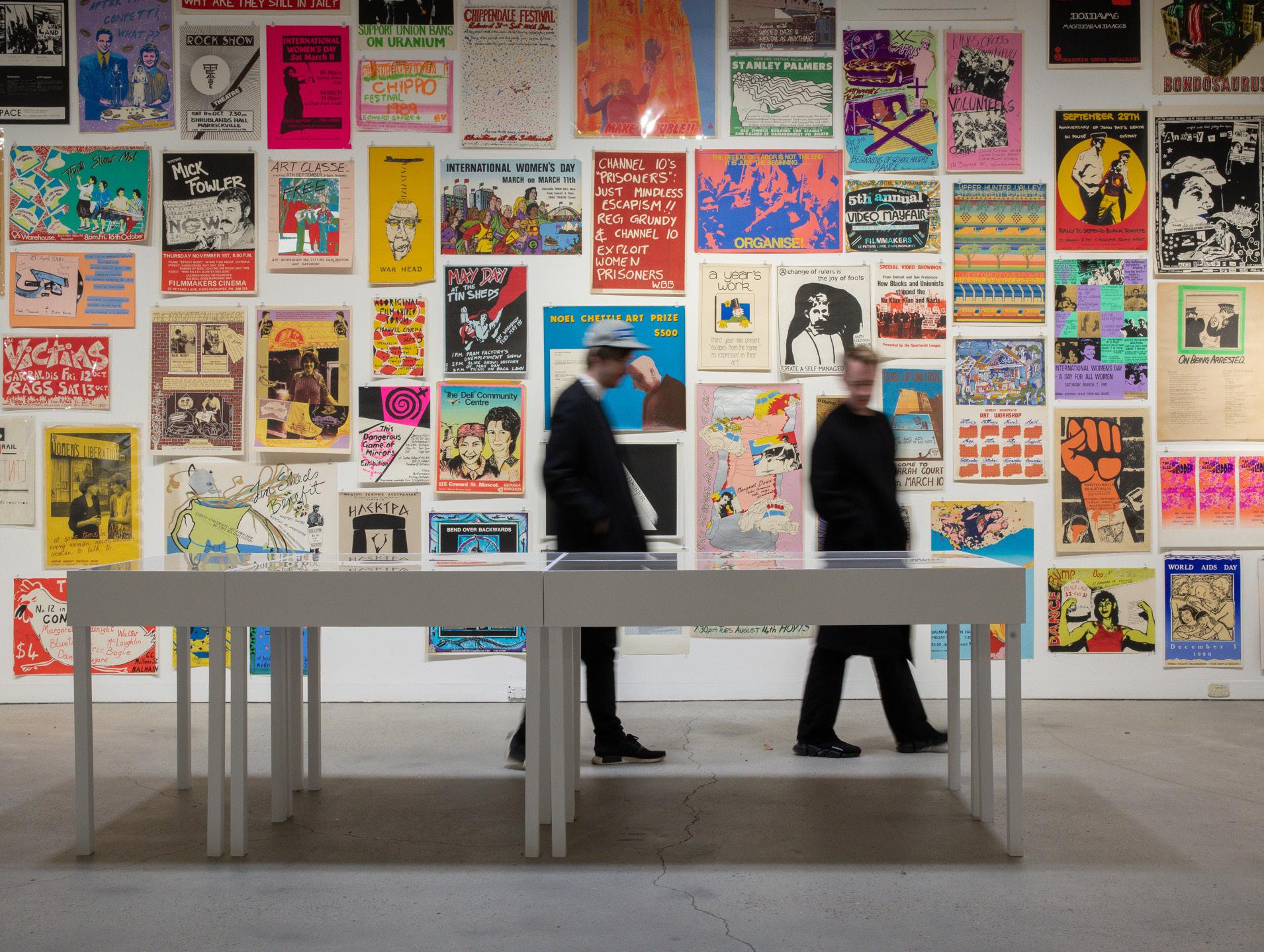
Once located in a group of dilapidated corrugated iron sheds on City Road, the artist-run Tin Sheds was home to workshops, events, alternative living, and the generation and dissemination of political art and activism on issues of race, feminism, ecology and nuclear disarmament. Through its uniquely arbitrary and chaotic nature, the Tin Sheds archive embodies the spirit of a time where discrete segments of society in Sydney were coalescing to present alternatives to their social and political reality.
Artists: Alex Gawronski, Zoe Marni Robertson, Jack Wotton, Stuart Bailey, Maya Stocks, Mitchel Cumming, Toby Zoates
Material from the Tin Sheds Archive, including works by Earthworks & Lucifoil Poster Collectives, and films by Peter Kennedy & John Hughes, Mary Callaghan
Image credit: Maja Baska
Banquet
1 September – 8 October 2022
Curated by Marissa Lindquist & Michael Chapman
Banquet re-imagines the Tin Sheds Gallery as an interactive banquet hall. Referencing Roman Emperor Nero Germanicus’ Golden Banquet Room - the gallery is transformed into a spatial laboratory exploring food processes and the human condition. Fictional moments in film and literature are re-animated through seven handcrafted analogue ‘food machines’, accompanied by architectural drawings.
These food machines are stationed throughout the gallery, responding to the various courses of a degustation constructed through architectural means. Scenes from films such as Wes Anderson’s ‘Grand Budapest Hotel’, an adaptation of George Orwell’s ‘1984’, and Studio Ghibli’s ‘Spirited Away’ come to life through the machines.
Banquet was conceived during the pandemic lockdowns. For many it was a time to engage with the joys of food production in the home, while the absence of a collective dining experience left its mark on social interaction. Banquet is an invitation back into an immersive dining assemblage.
 Exhibitors: Marissa Lindquist and Michael Chapman with Imogen Sage, Robyn Schmidt, Timothy Burke, Peter Fisher, Derren Lowe
Image credit: Maja Baska
Exhibitors: Marissa Lindquist and Michael Chapman with Imogen Sage, Robyn Schmidt, Timothy Burke, Peter Fisher, Derren Lowe
Image credit: Maja Baska
SHErobots Tool, Toy, Companion
20 October - 10 December 2022
Curated by Dagmar Reinhardt, Lian Loke, Deborah Turnbull Tillman
We are on the brink of a new world of living with robots. Now is the time to critically question who participates in the creation of new forms of robots, and how. We are witnessing the rise of the Female Future, where women are leading and radically reshaping practices of design, construction, manufacturing, social and cultural robotics. Implicit in female-led robotic practices is the overturning of patriarchal values towards a progressive more-than-human paradigm.
SHErobots is the first exhibition of its kind in Australia. It charts and builds upon a history of expert research and output of women pioneering work in a cross-disciplinary network situated aroud the globe. It explores how they build, hack, adapt and programme both new and off-the-shelf robots through a showcase of six-axis industrial robots, installations, performances, documentaries, art films, prototypes, material samples, and creative objects.
In partnership with UNSW Art, Design and Architecture
This project has been assisted by the Dutch Ministry of Foreign Affairs, through the Embassy of Kingdom of the Netherlands, Australia and TU Delft, Robotics Institute, Netherlands.
 Image credit: Maja Baska
Image credit: Maja Baska
Words from the students of the Graduate Exhibition Elective
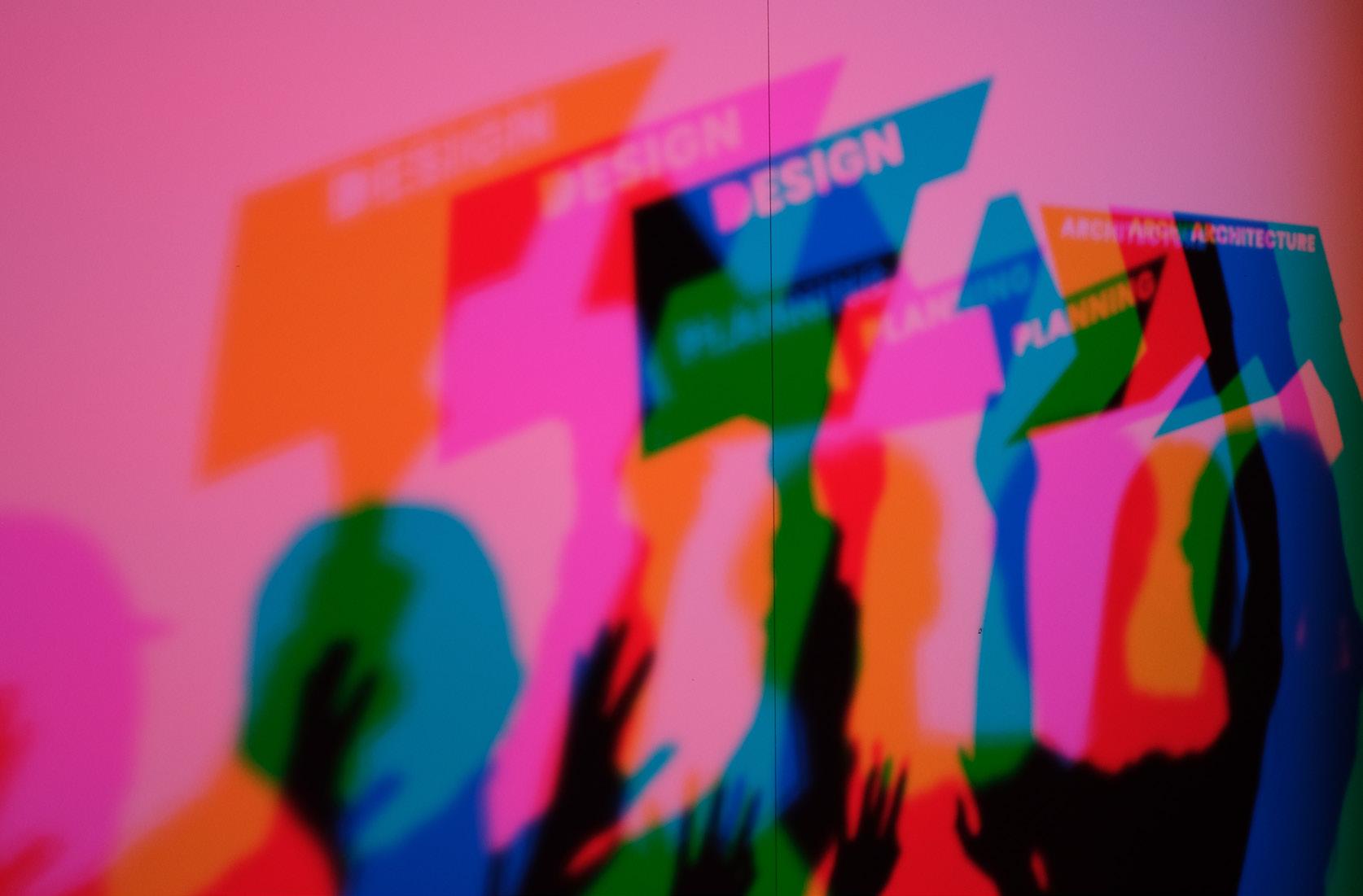 Supervised by Kate Goodwin
Supervised by Kate Goodwin
“The graduate exhibition is an elective that allowed us to contribute to something special for graduating students. We have spent more than half of our bachelor’s degree online when all our classmates were virtual icons on the screen. So being able to stick around at Wilkinson building with schoolmates from other degrees and contributing to the graduate exhibition I guess is a truly ‘physical experience.’”
- Sue Pan, Cedric Ho
“Grad Show elective was an eye-opening and fruitful experience, giving us a taster into exhibition design. There were many moving parts and key stakeholders which we had to navigate, resulting in a playful yet nuanced show which gives voice to each graduating student.”
- Amanda Yao, Elly Xiao
“The Grad Show was a great way to wrap up my degree. I was able to put my design skills to use and contributed to designing the website. I was able to overcome challenges with clients for real life outcomes which gave me a sense of independence and results were really rewarding.”
- Jesslyn Harianto
84
“Though we come from different faculty backgrounds, we can unanimously say our experience with the Graduate Exhibition elective has been one of the most challenging units throughout the entirety of our degrees. It was eye-opening and almost humbling on how easy it was to envision and elaborate our designs (on paper) but how difficult it was to produce and manufacture in the real world. In saying that, we learned a lot, becoming an invaluable experience for each of us.”
- Yusuke Fujii, Christine Han, Joy Liu

“Working through the Graduate Exhibition with Kate and the team has been such a fun experince. Learning from Kate and her expertise in the field and being able to apply it to the exhibiton for the graduating students feels like a full circle moment. This opportunity has allowed me to feel a part of the process behind one of the most exciting times in my studies. Working alongside Adrian on the catalogues was a tough but rewarding experience.”
- Sam Betalli
“This lesson showed us the difference between imaginary design and actual production. Still, we had to keep thinking, keep trying, and work with different professionals to solve problems. During the design process, we learned to never say “no” to our designs; there are more solutions than there are problems.”
- Yihan Gao, Ginny Sun
“Right from the start, the ideas of DIY and circularity had fascinated us with their potential of creating a reusable exhibition design that ‘adopts’ the Hearth. The display ‘assemblage’ aims to democratise the students’ curatorial experience with a flexible, self-curated space which adapts to suit their unique projects and perspectives.”
- Sagarika Sharma, Adil Hussain
Sponsors







The Sydney School of Architecture, Design and Planning would like to thank the following sponsors for their generosity in making the 2022 Graduate Exhibition possible.

87
Platinum Gold Silver Bronze

CONGRATULATIONS to the graduates of the University of Sydney! We look forward to seeing you in the near future as you continue your journey toward registration.
Image: Boaz Nothman for the Sydney Architecture Festival 2019
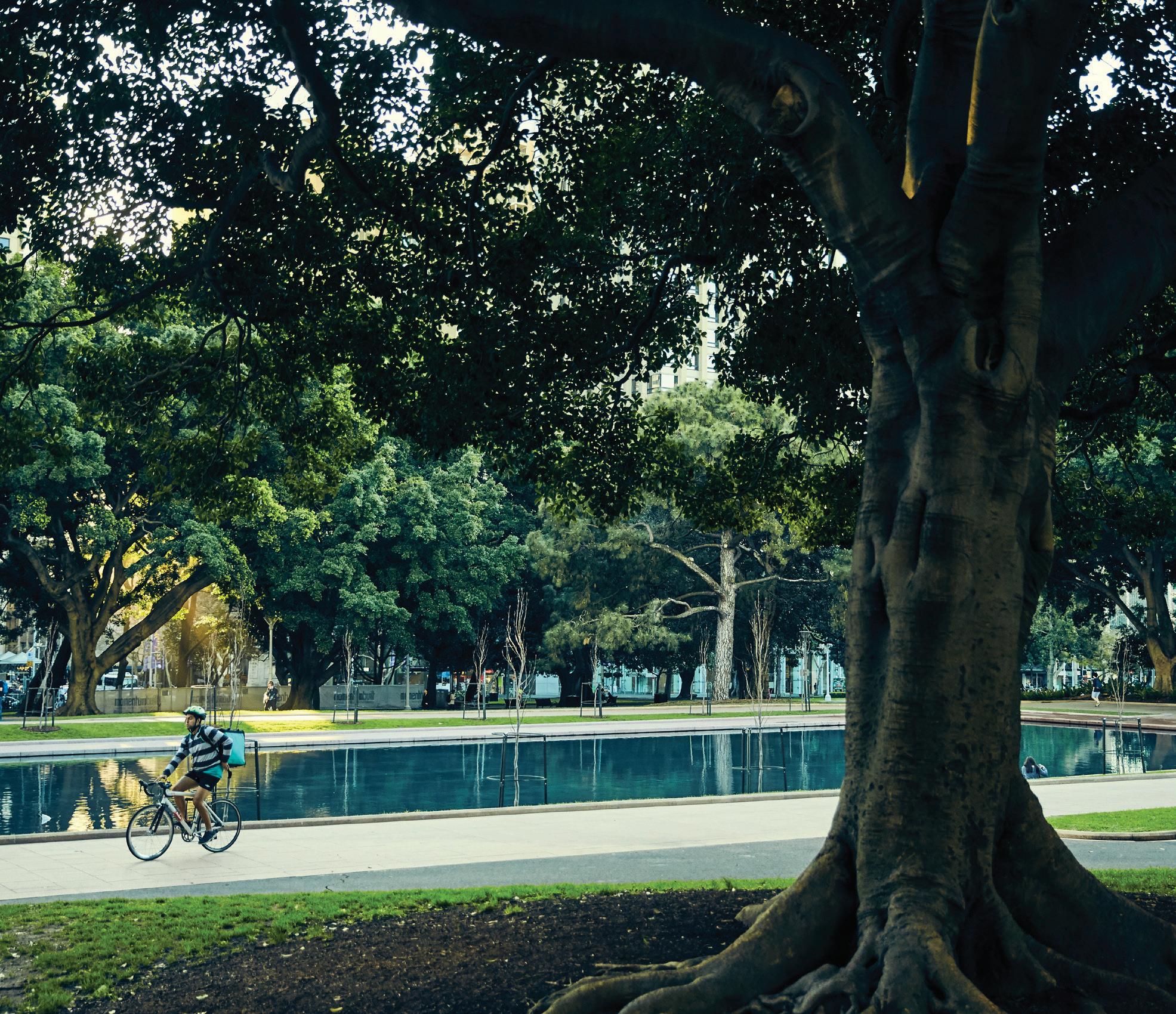
89
At Plus we believe in finding great talent and then getting out of their way. We value a positive work/life balance and are proud of the vibrant, supportive and flexible workplace culture we have built in each of our studios across Australia and New Zealand.
We are on the lookout for great talent to join our team. Please reach out to us at careers@plusarchitecture.com.au

We are a diverse, passionate team of creatives committed to delivering impactful designs through exploration and creativity.
MOORE COLLEGE, NEWTOWN
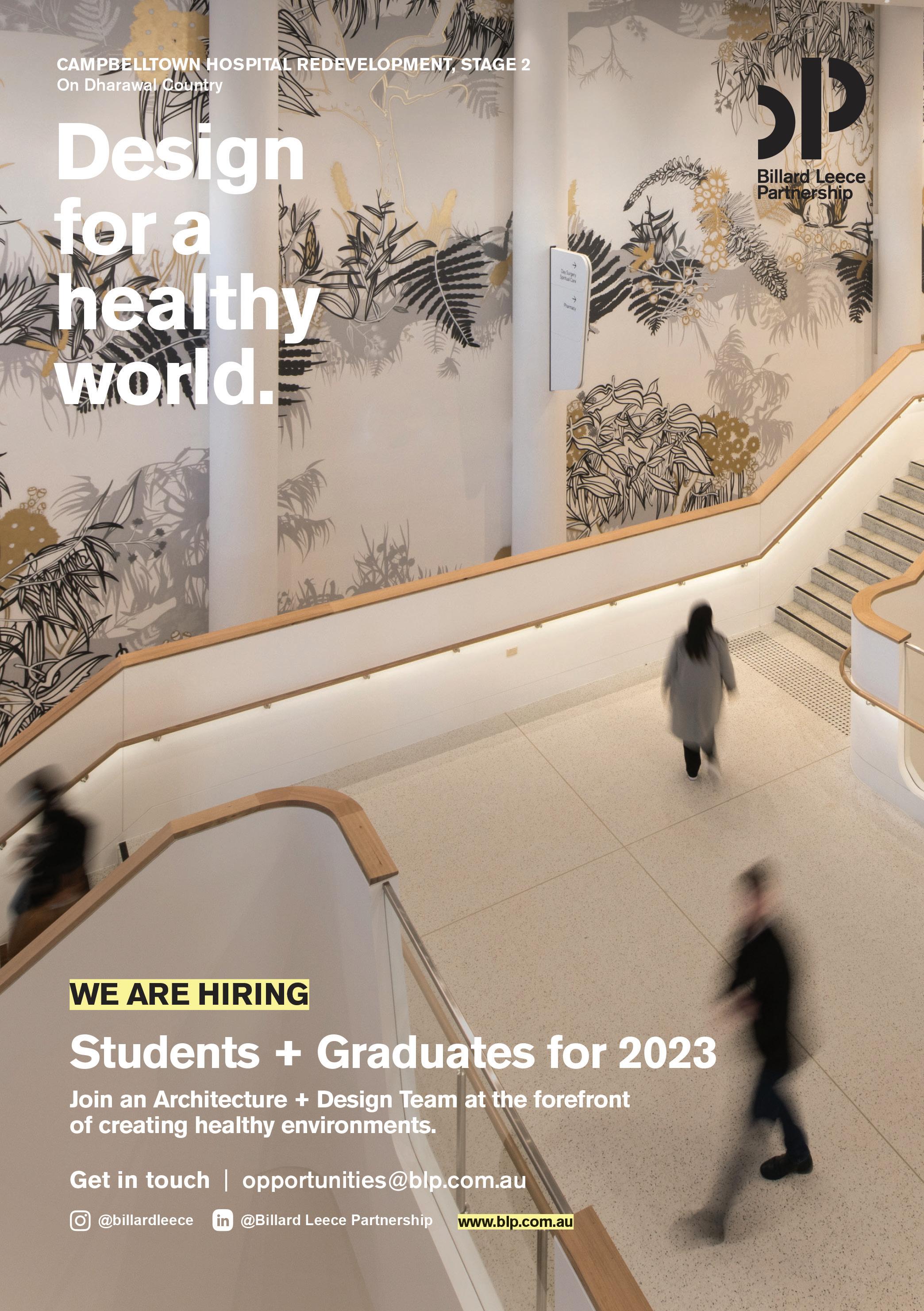
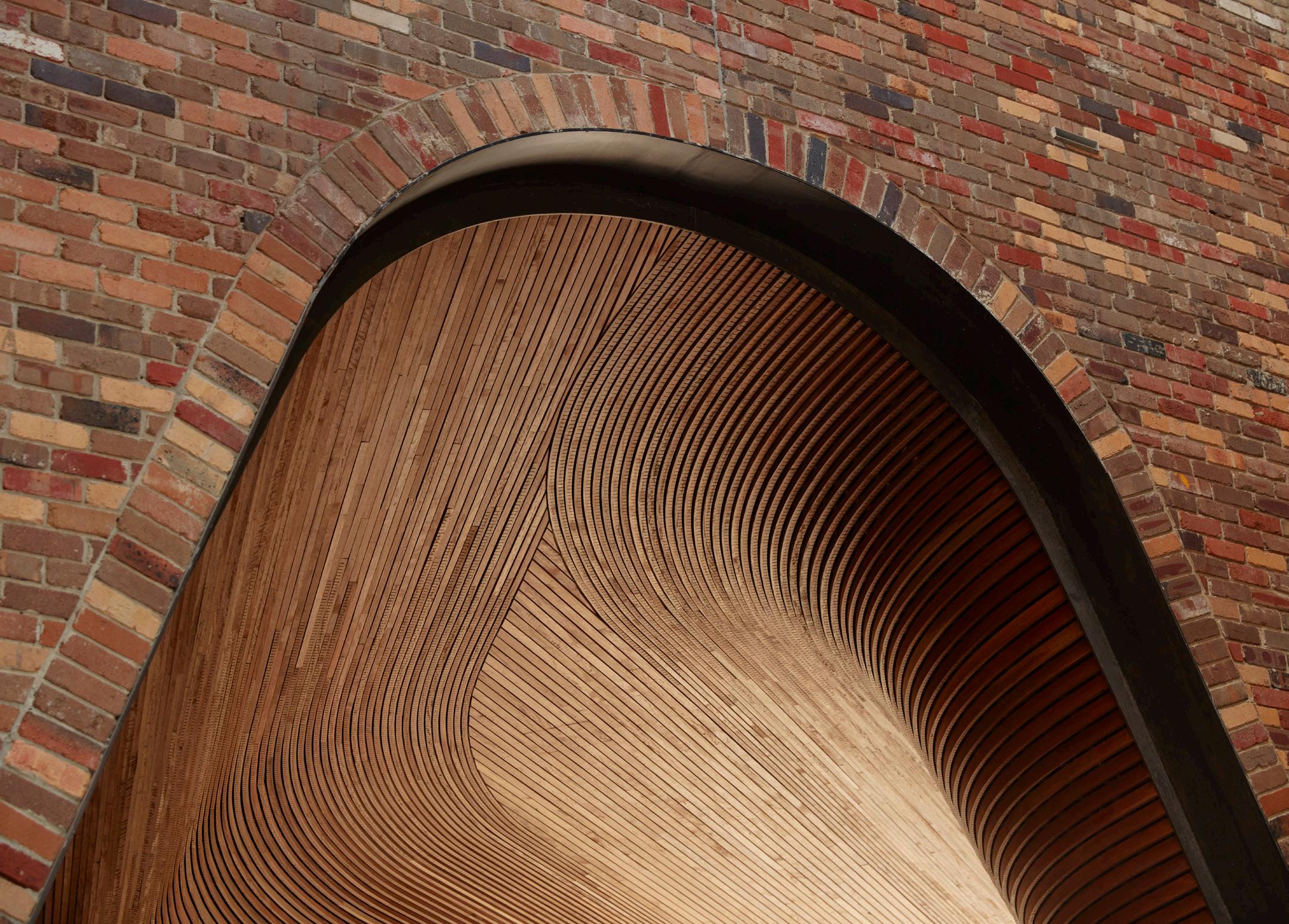

Come create with us! ARCHITECTURE INTERIOR DESIGN URBAN DESIGN DKO.COM.AU Congratulations 2022 Graduates! Looking for career opportunities? We are on the lookout for current students and recent graduates. For more information and to apply, visit batessmart.com


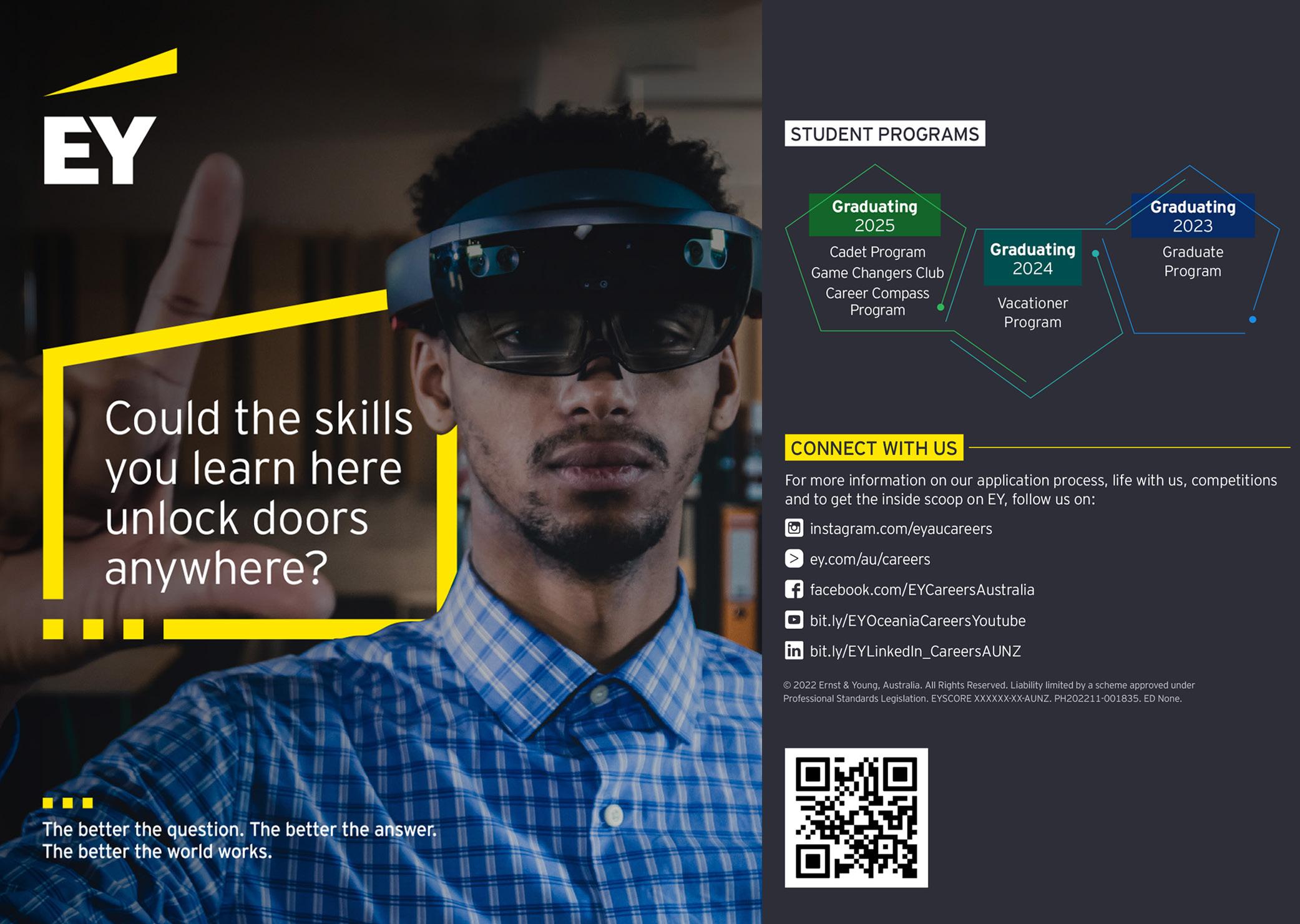

Assemblage 2022 ISBN: 978-0-6455400-7-9
This book, Assemblage, and all works depicted in it are © editors and contributors, 2022. All rights reserved. We endeavour to ensure all information contained in this publication is accurate at the time of printing.
The Graduate Exhibition elective was run by Kate Goodwin.
The exhibition was devised by the following architecture and design students: Sam Betalli, Yusuke Fujii, Yihan Gao, Christine Han, Jesslyn Harianto, Cheng Hou Ho, Mohammad Adil Hussain, Zhongyi Liu, Shuyue Pan, Sagarika Sharma, Lexian Sun, Elly Xiao and Amanda Yao.
The Graduate Exhibition was supported by the External Engagement team, Steven Burns, Adrian Thai and Linda Wang, Iakovos Amperidis and Tin Sheds Gallery team, with Zoe Skinner, Dylan Wozniak-O'Connor and the Design Modelling and Fabrication team.
94
Editors Kate Goodwin Adrian Thai Designers Adrian Thai Samuel Betalli
95
96
Sydney School of Architecture, Design and Planning


 Kate Goodwin Professor of Practice, Architecture
Kate Goodwin Professor of Practice, Architecture




























 Kristen Hofner
Kristen Hofner
 Ruiwen Mo
Ruiwen Mo


























 Exhibition Team: Cracknell & Lonergan Architects, Graphic Expression, Marilyn Karet, Peter Lucas.
Image credit: Maja Baska
Exhibition Team: Cracknell & Lonergan Architects, Graphic Expression, Marilyn Karet, Peter Lucas.
Image credit: Maja Baska




 Exhibitors: Marissa Lindquist and Michael Chapman with Imogen Sage, Robyn Schmidt, Timothy Burke, Peter Fisher, Derren Lowe
Image credit: Maja Baska
Exhibitors: Marissa Lindquist and Michael Chapman with Imogen Sage, Robyn Schmidt, Timothy Burke, Peter Fisher, Derren Lowe
Image credit: Maja Baska
 Image credit: Maja Baska
Image credit: Maja Baska
 Supervised by Kate Goodwin
Supervised by Kate Goodwin
















